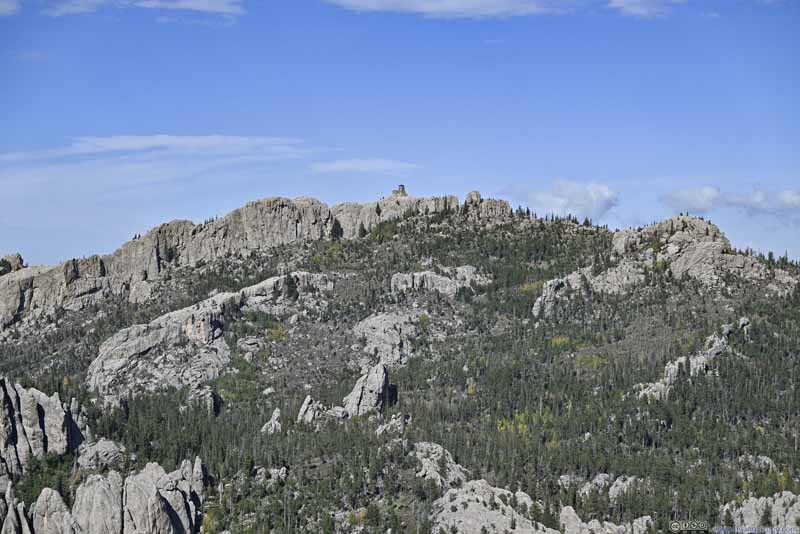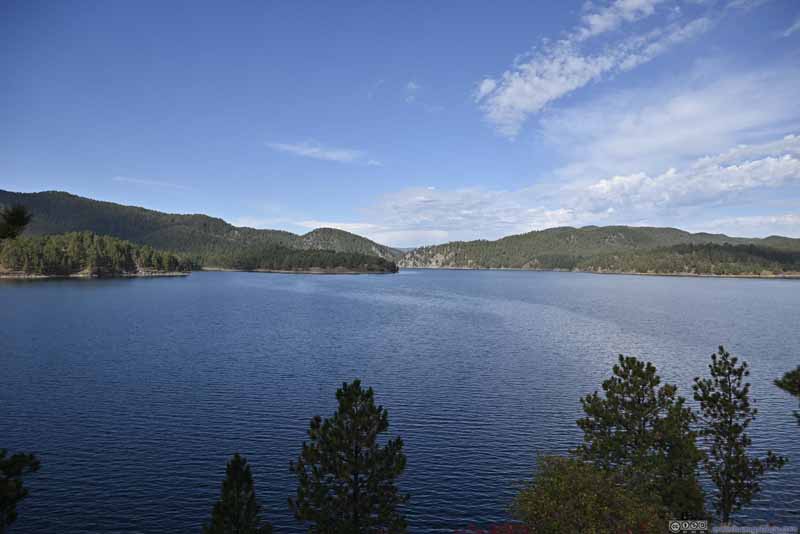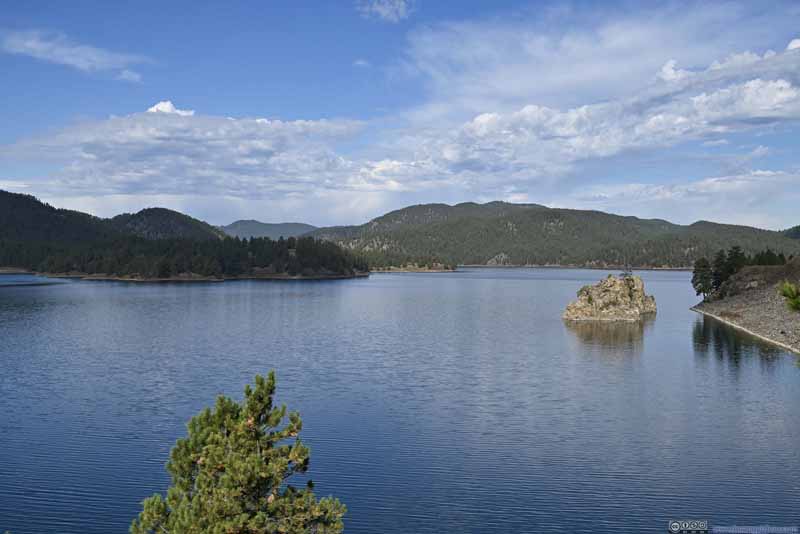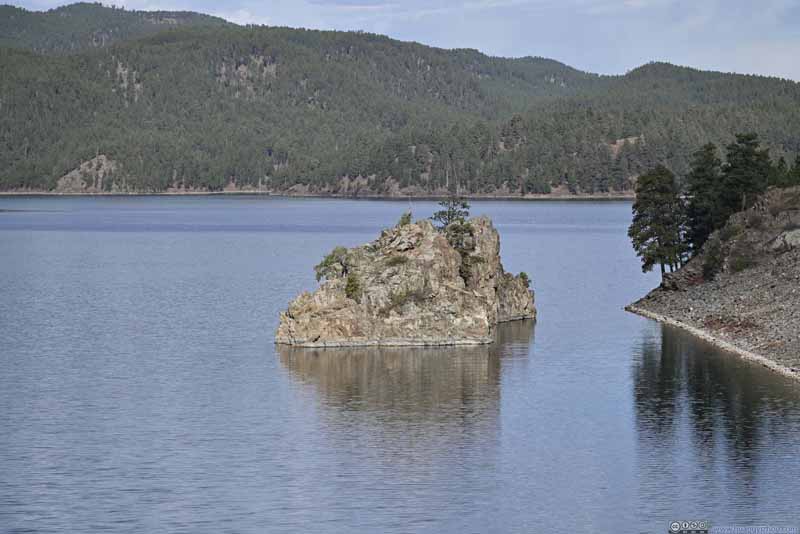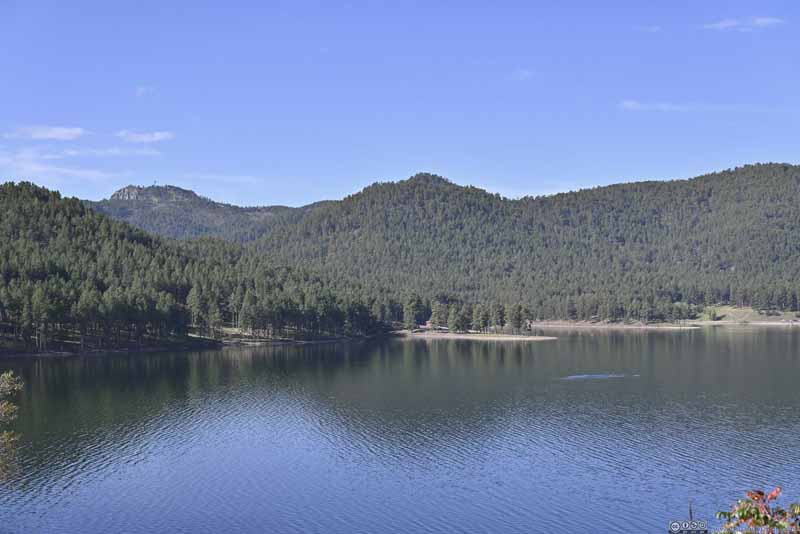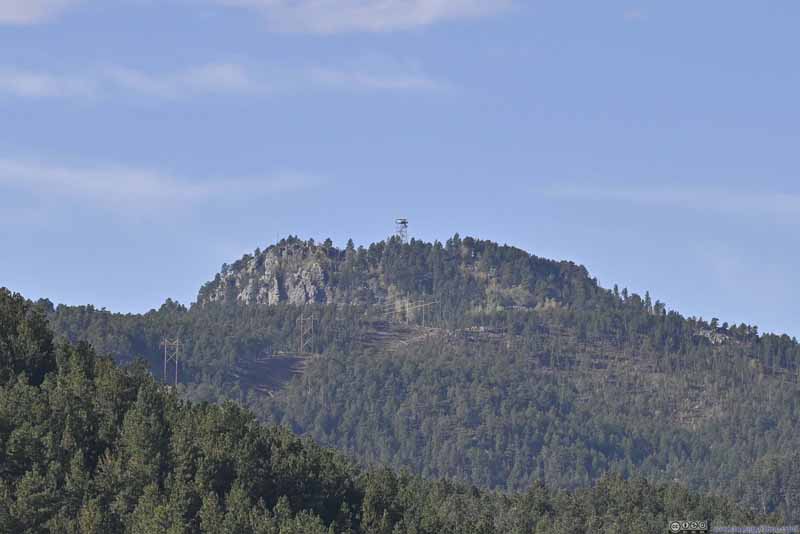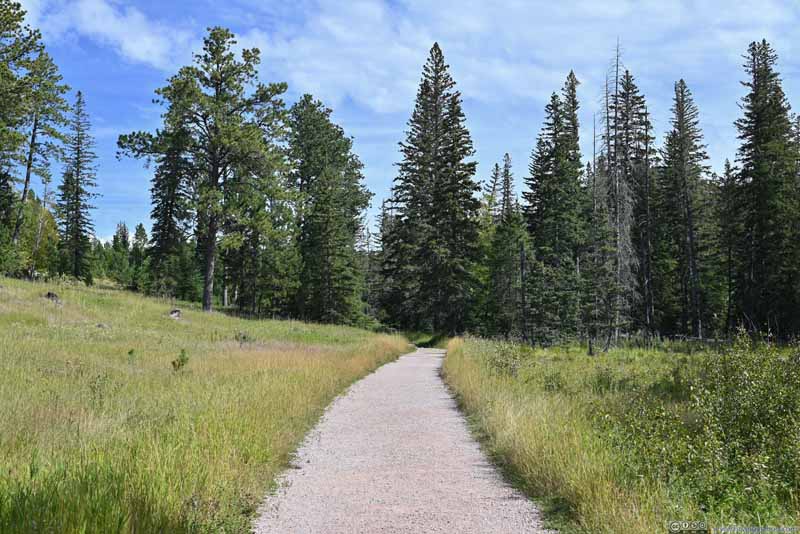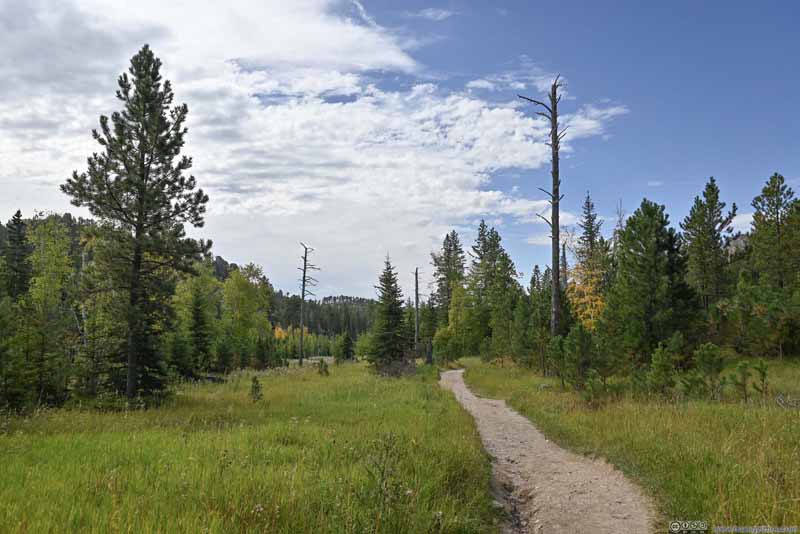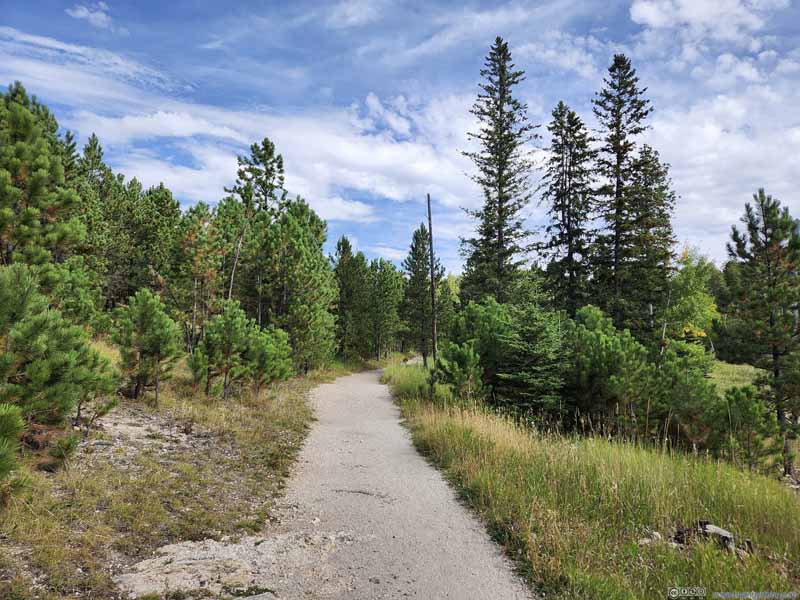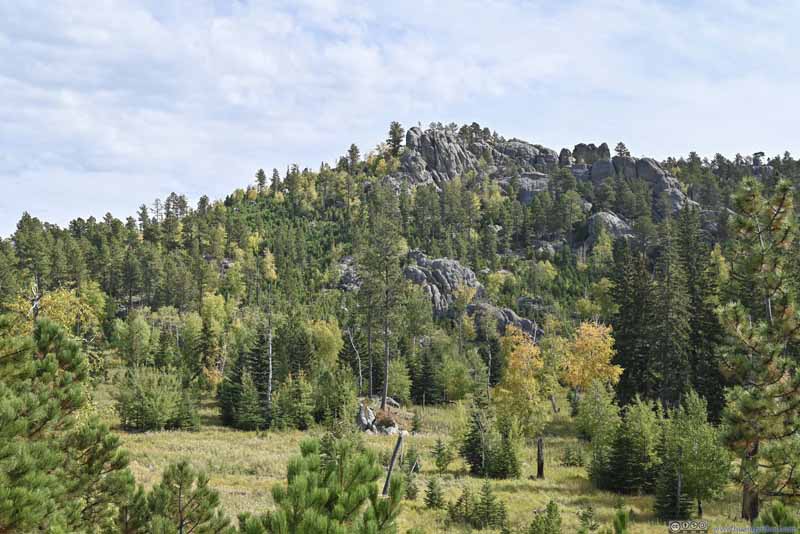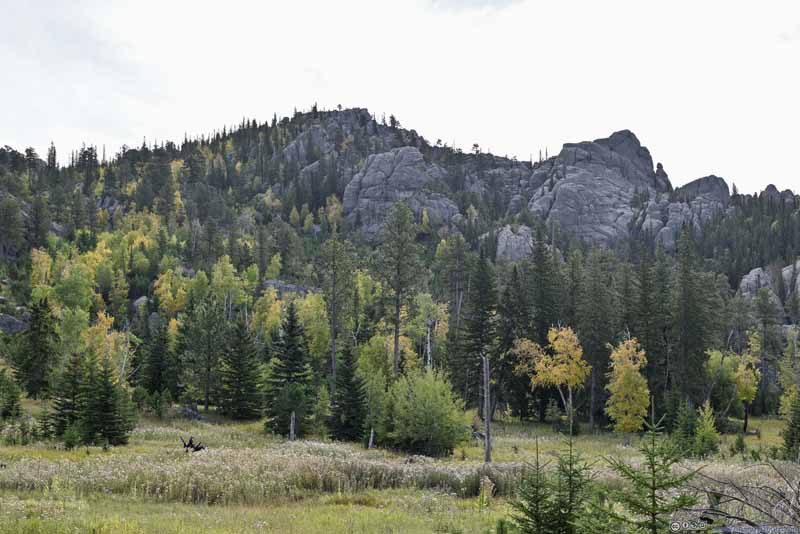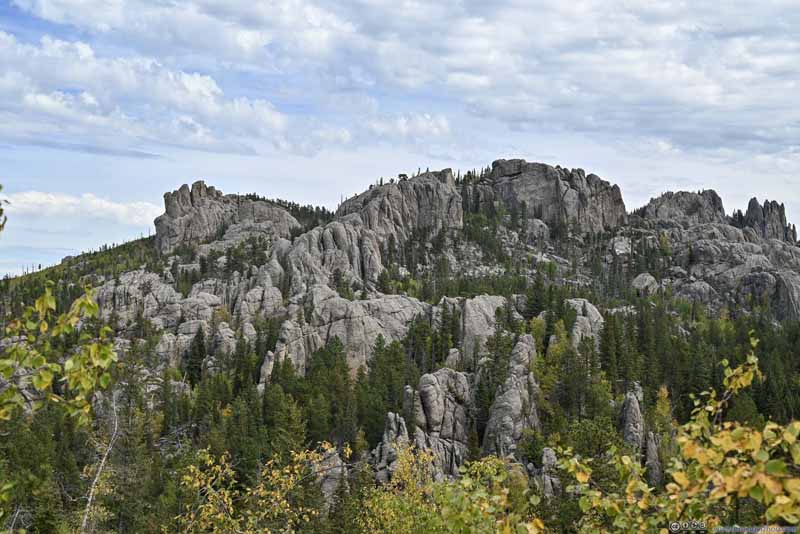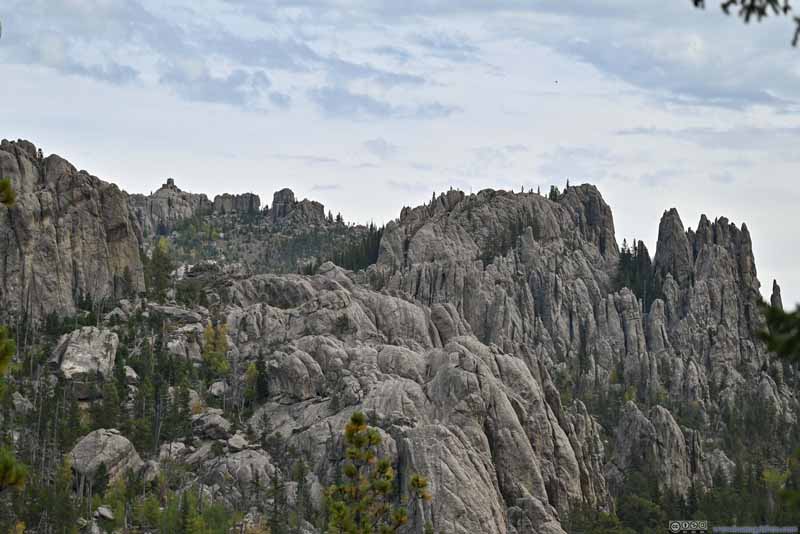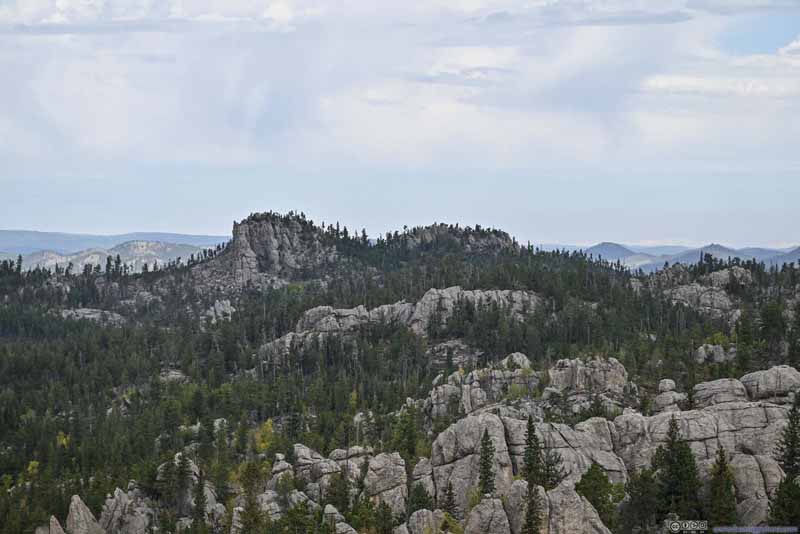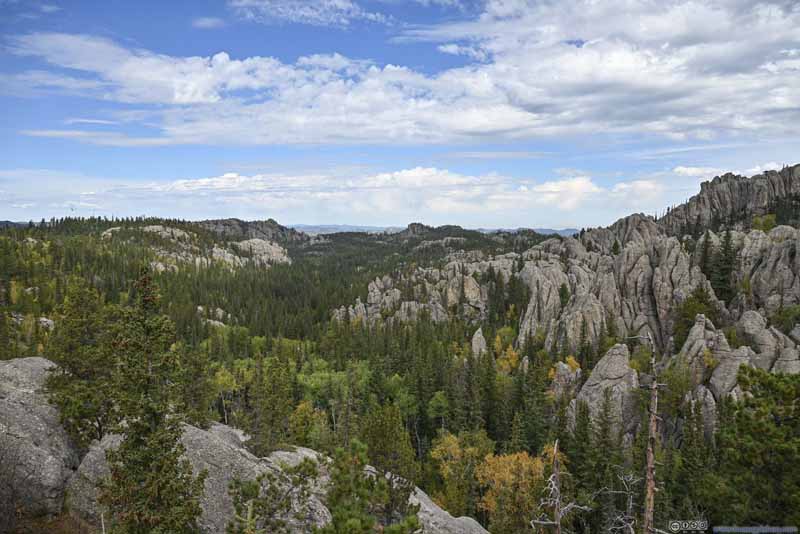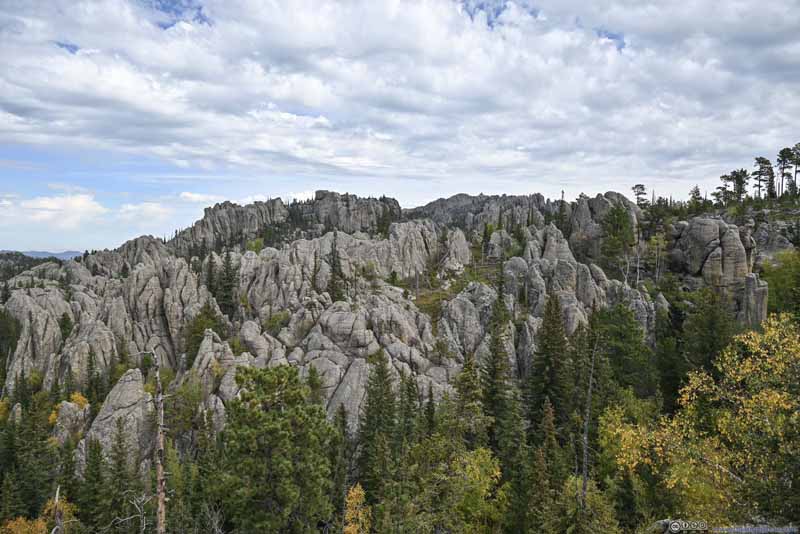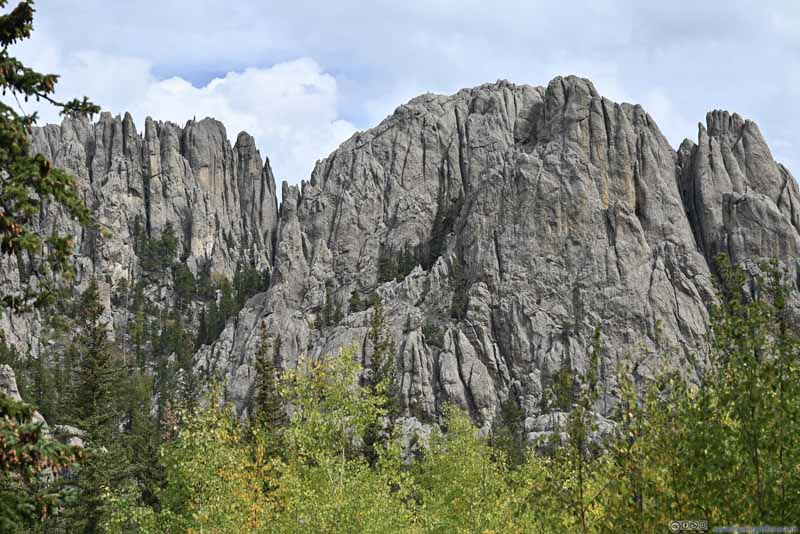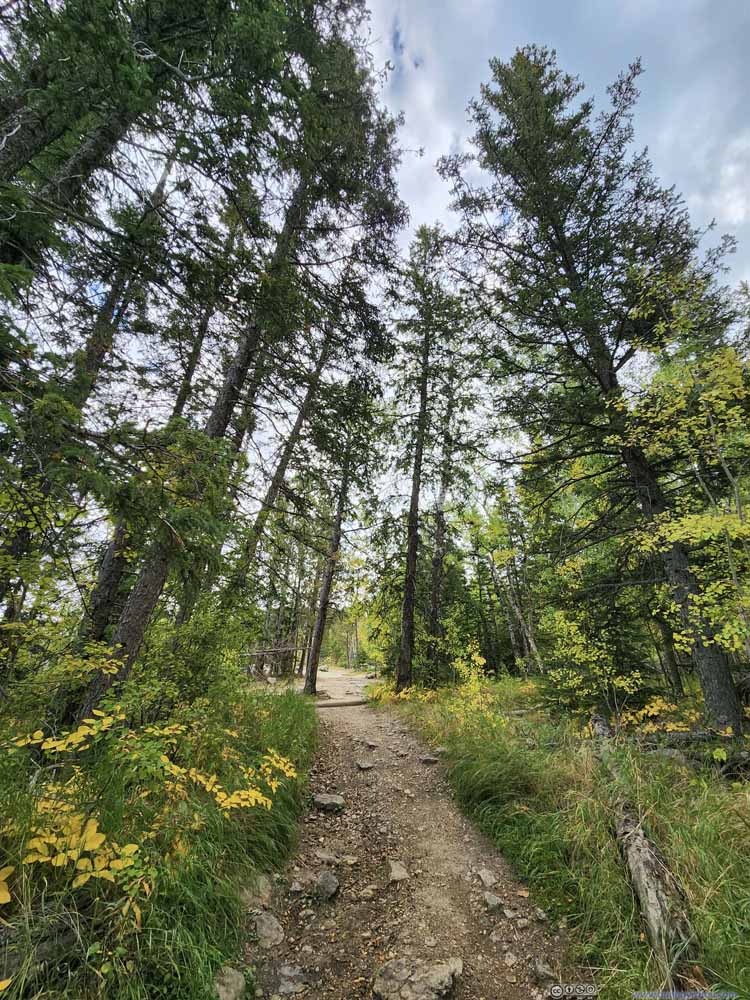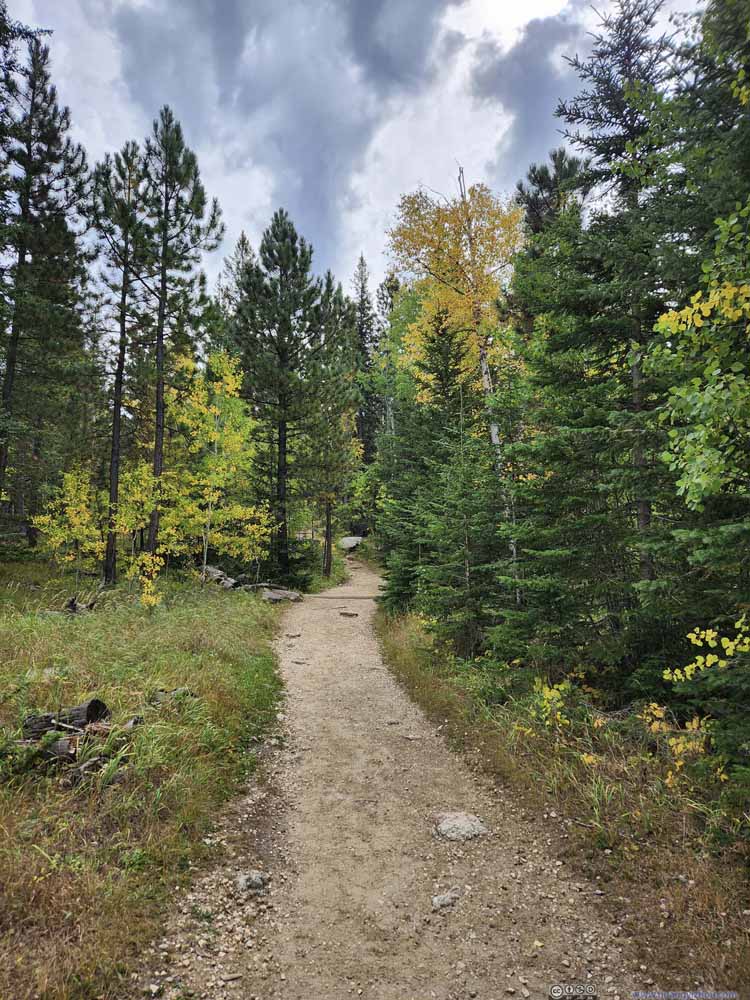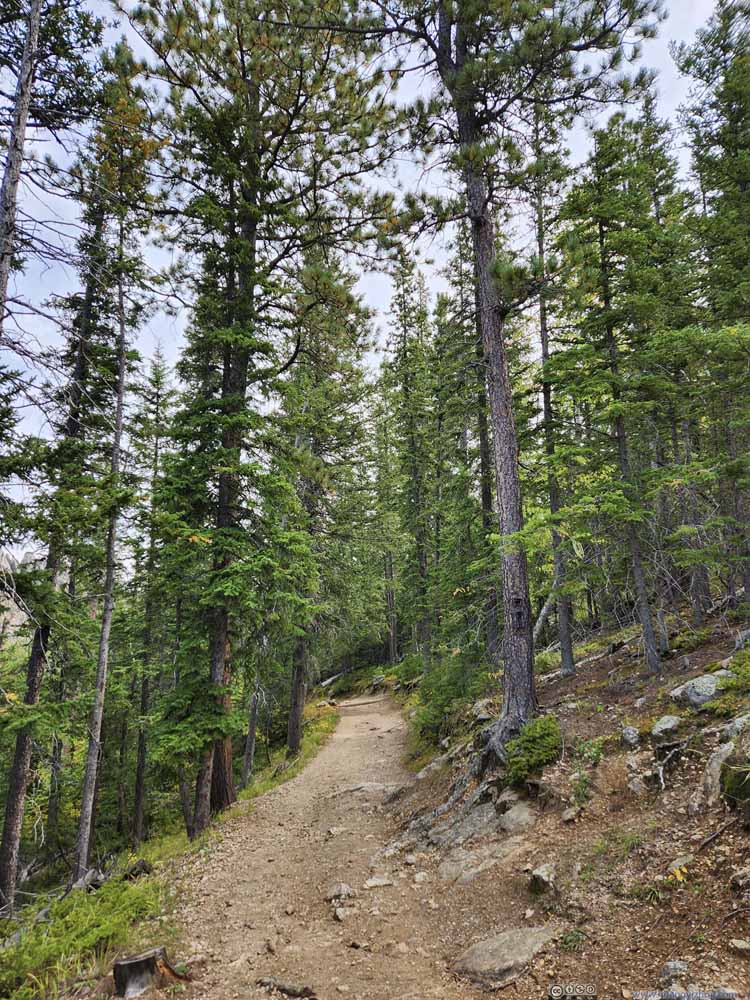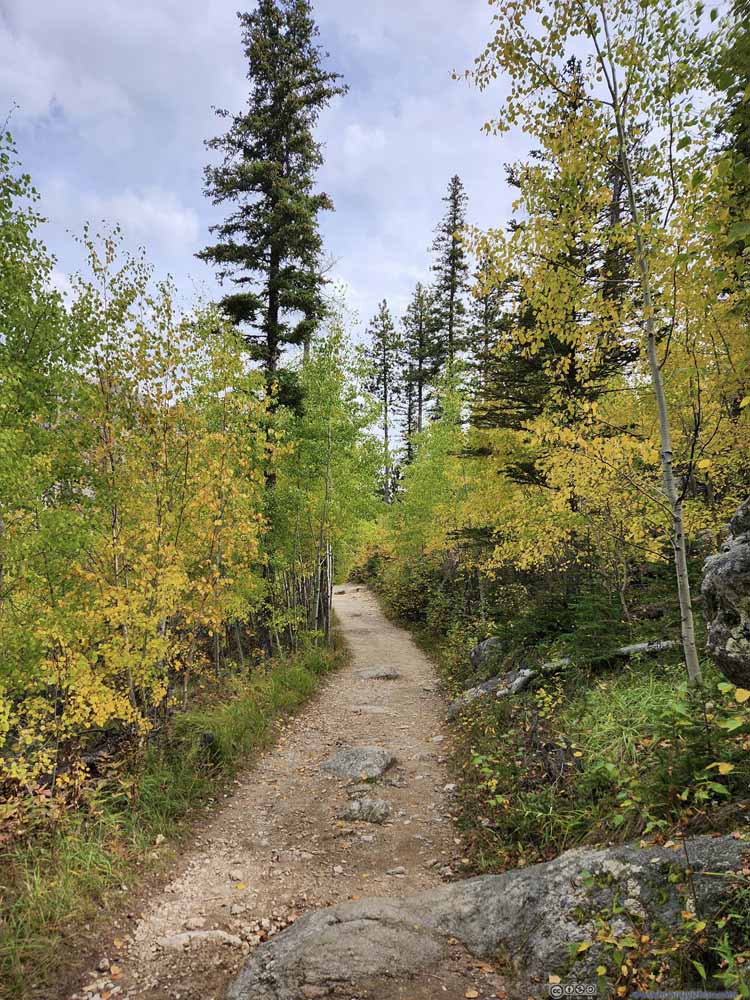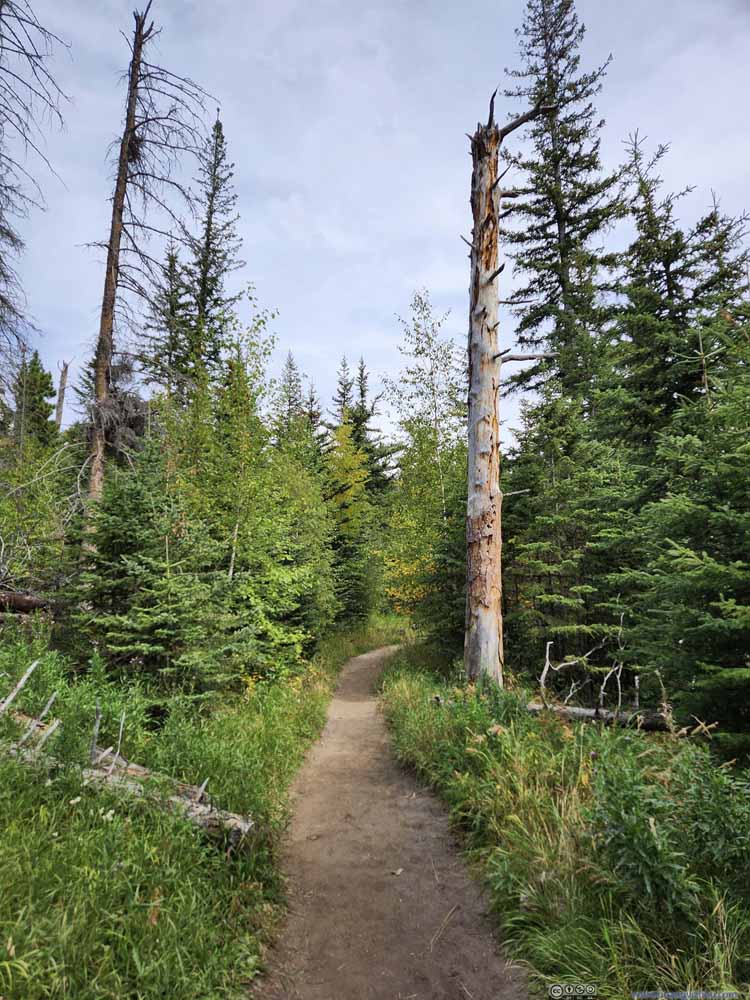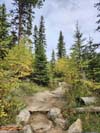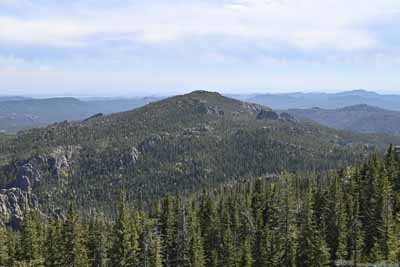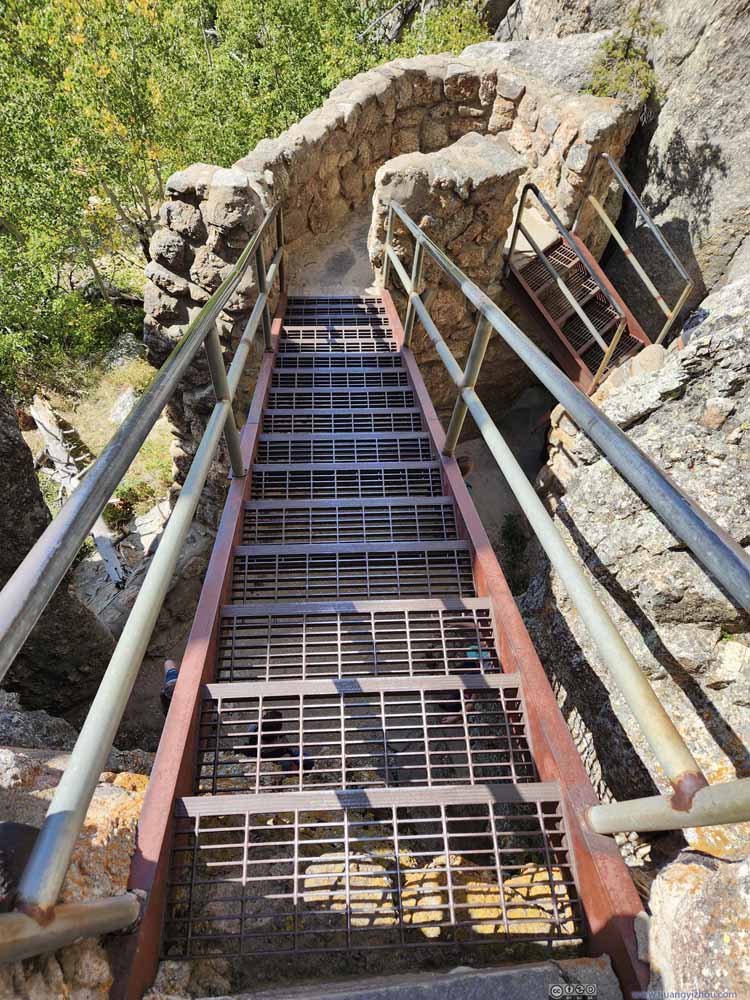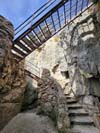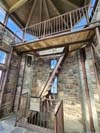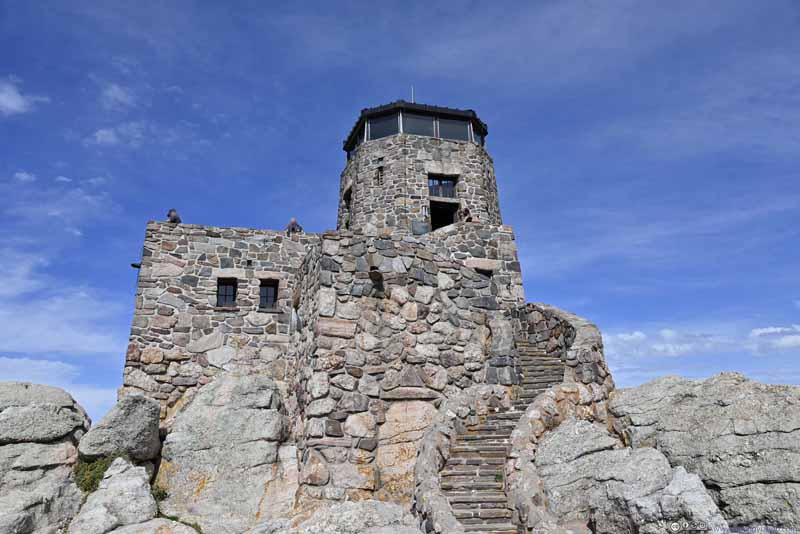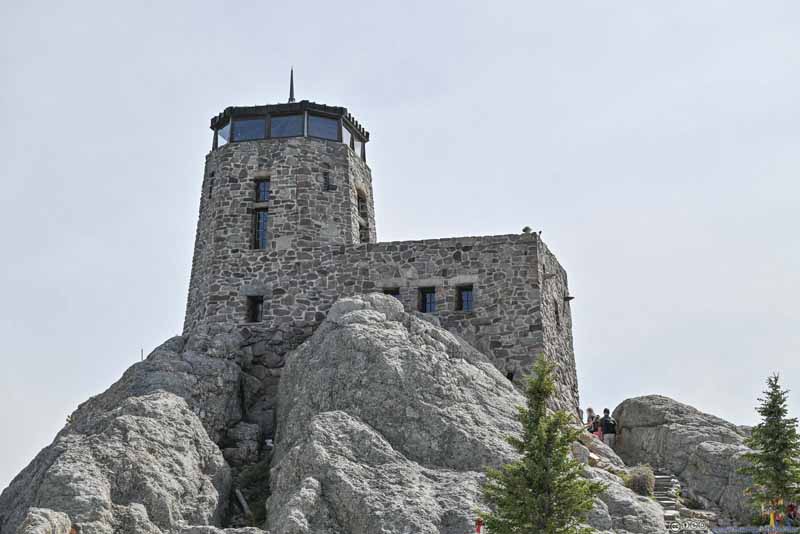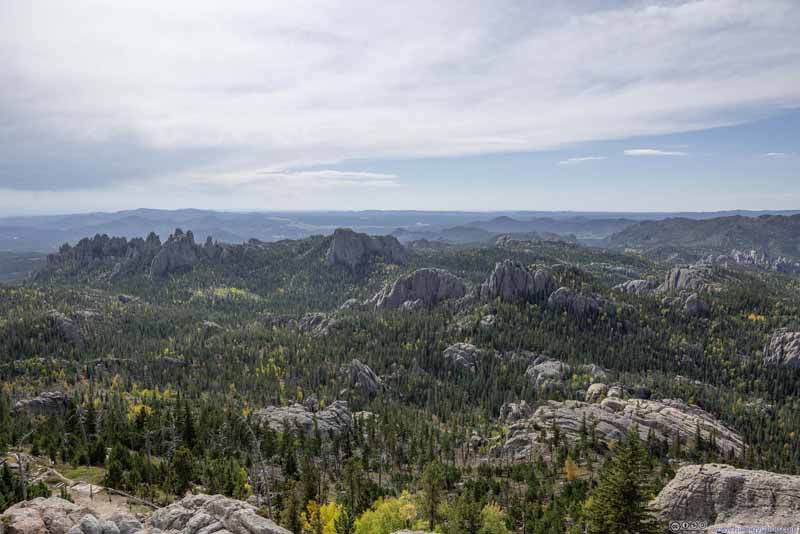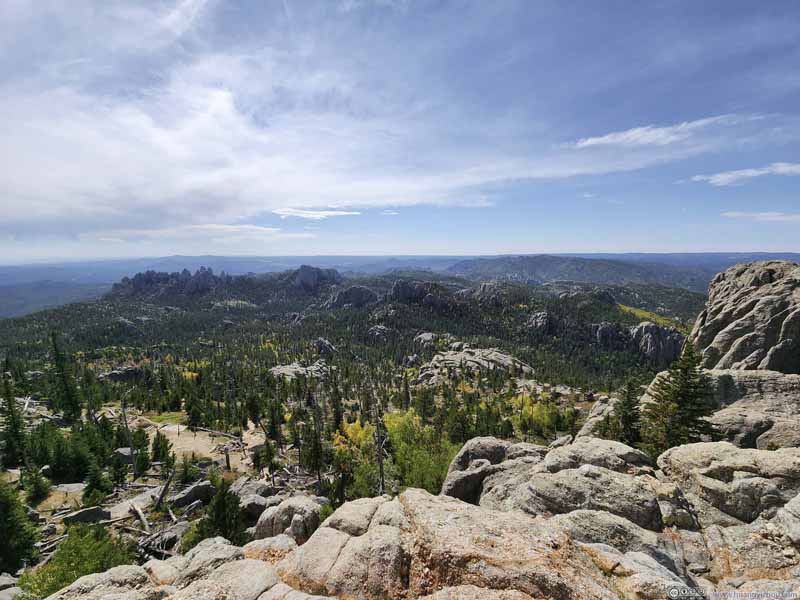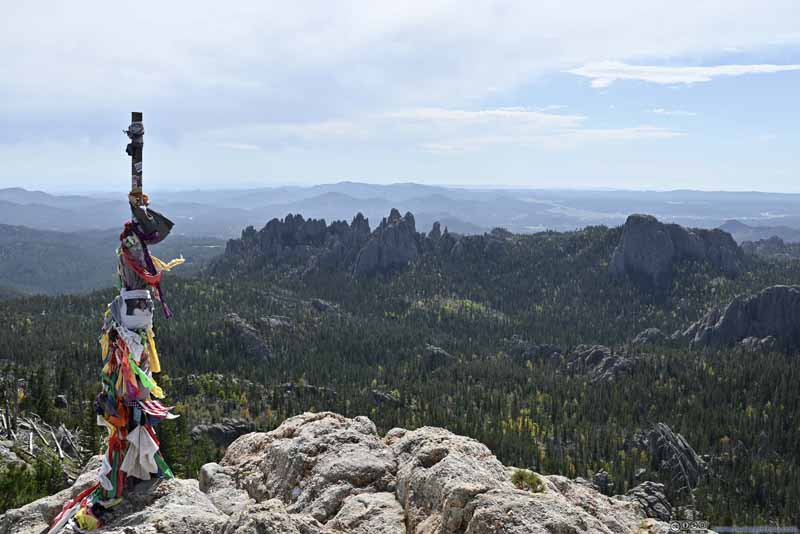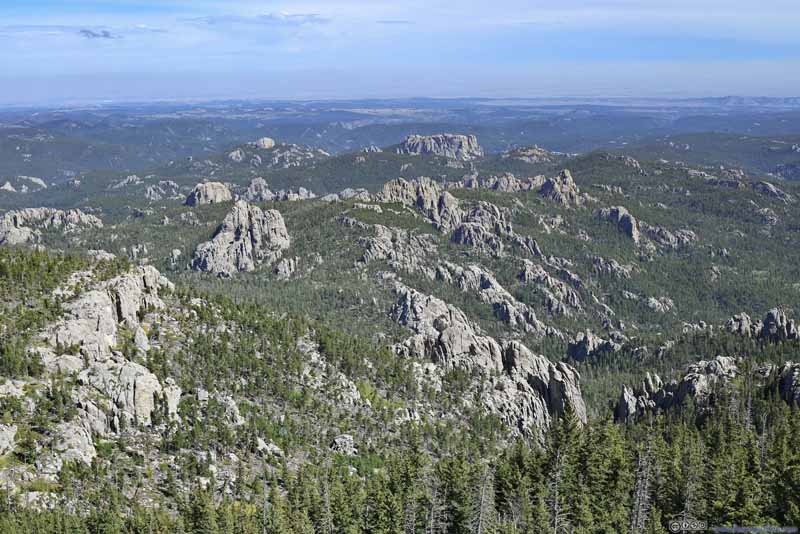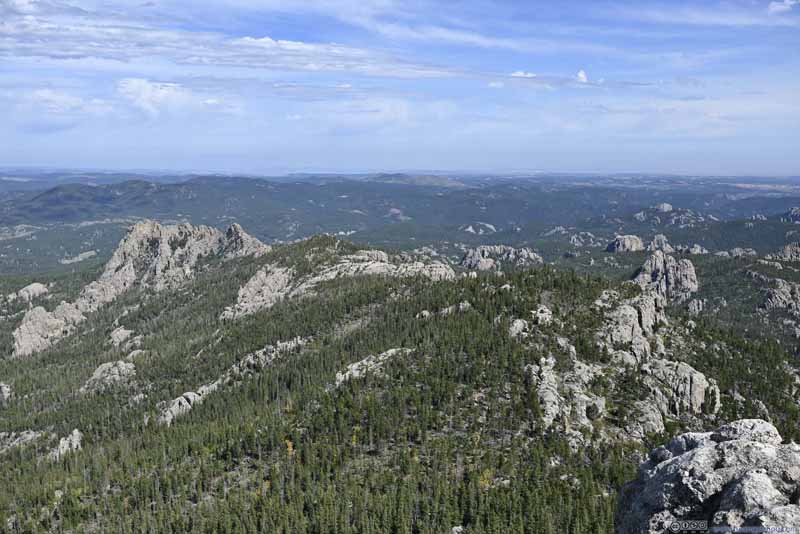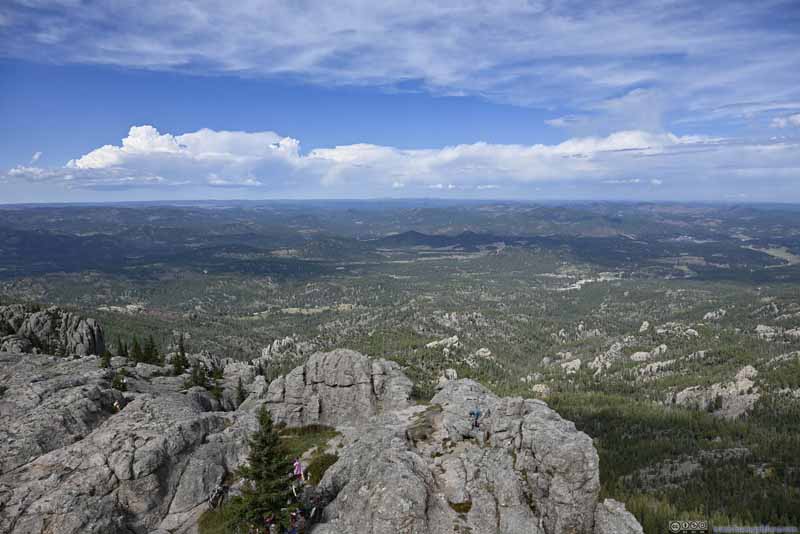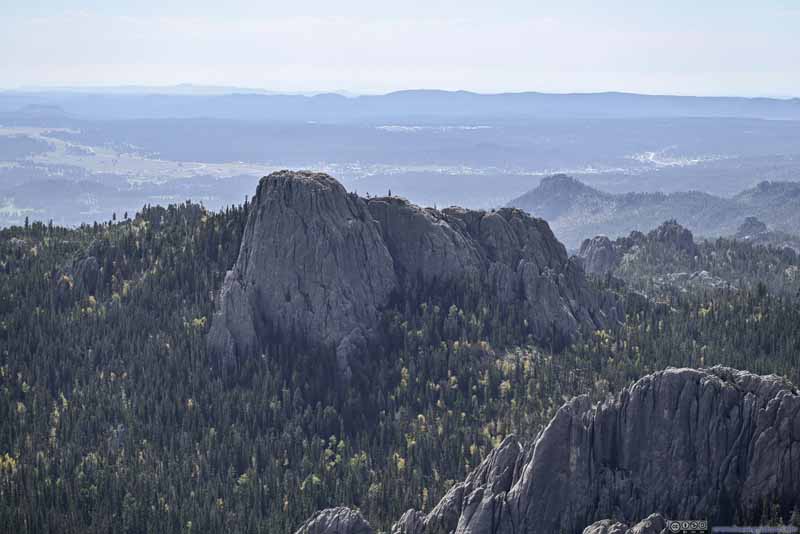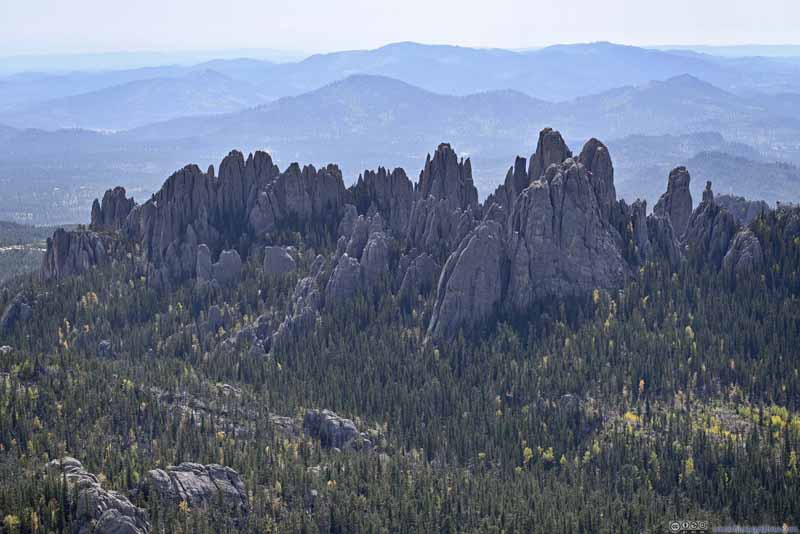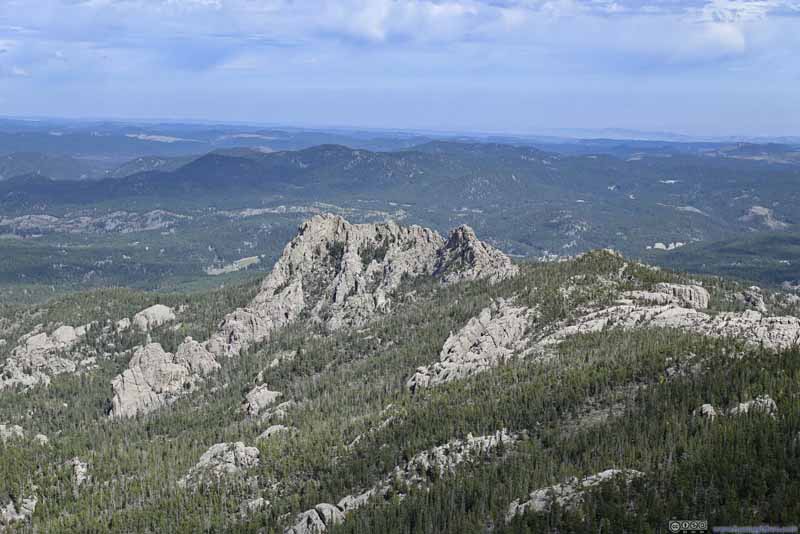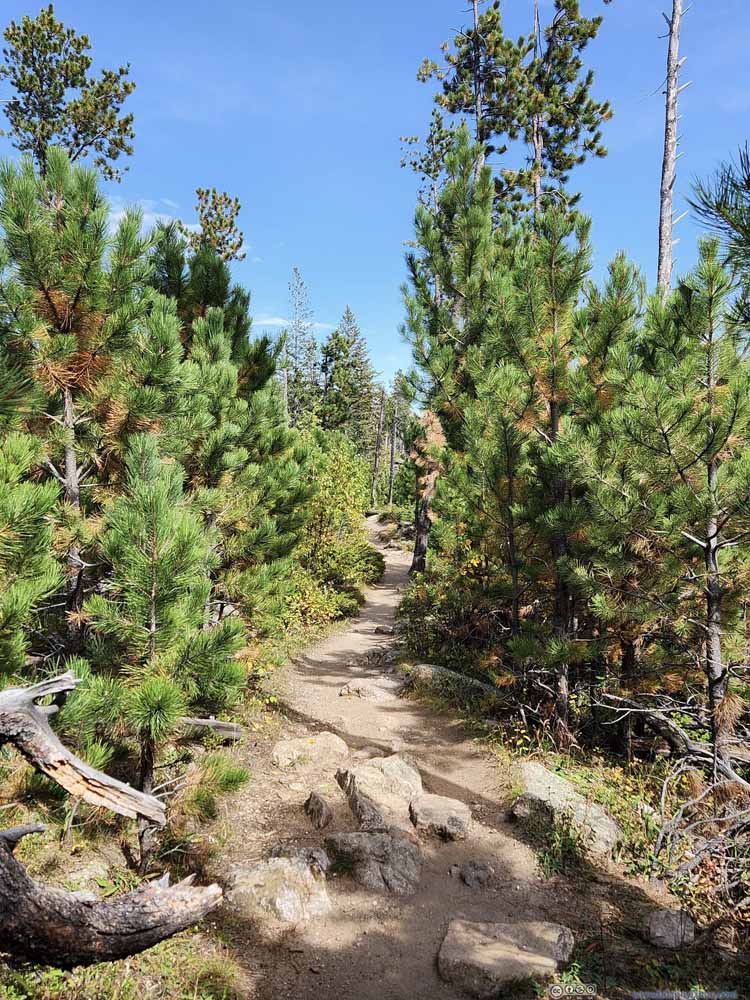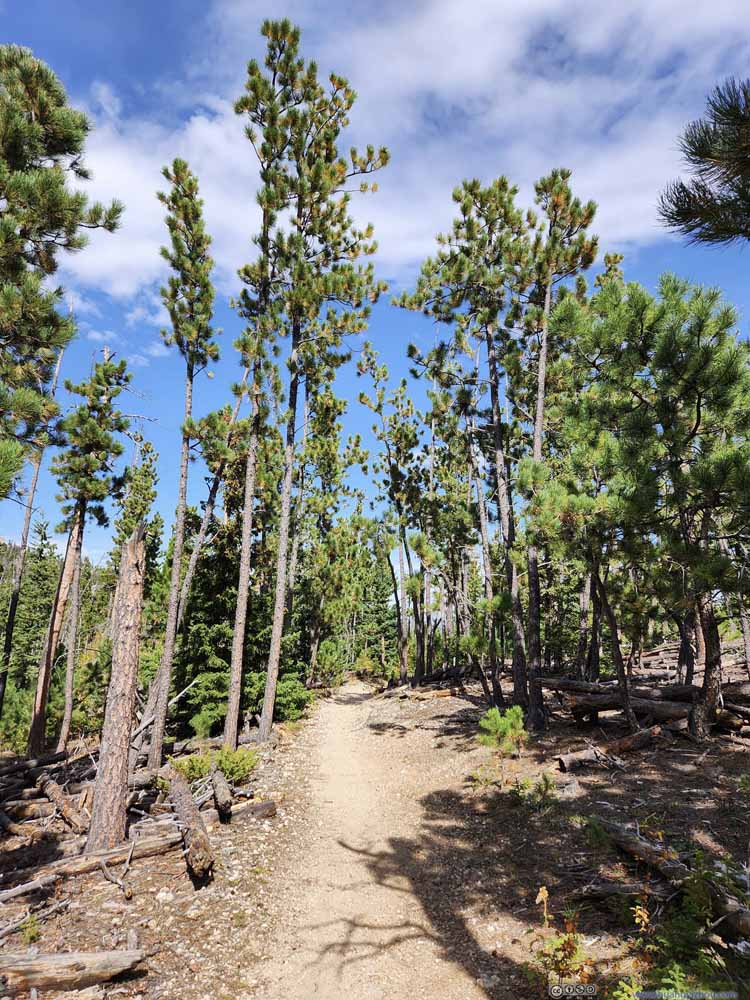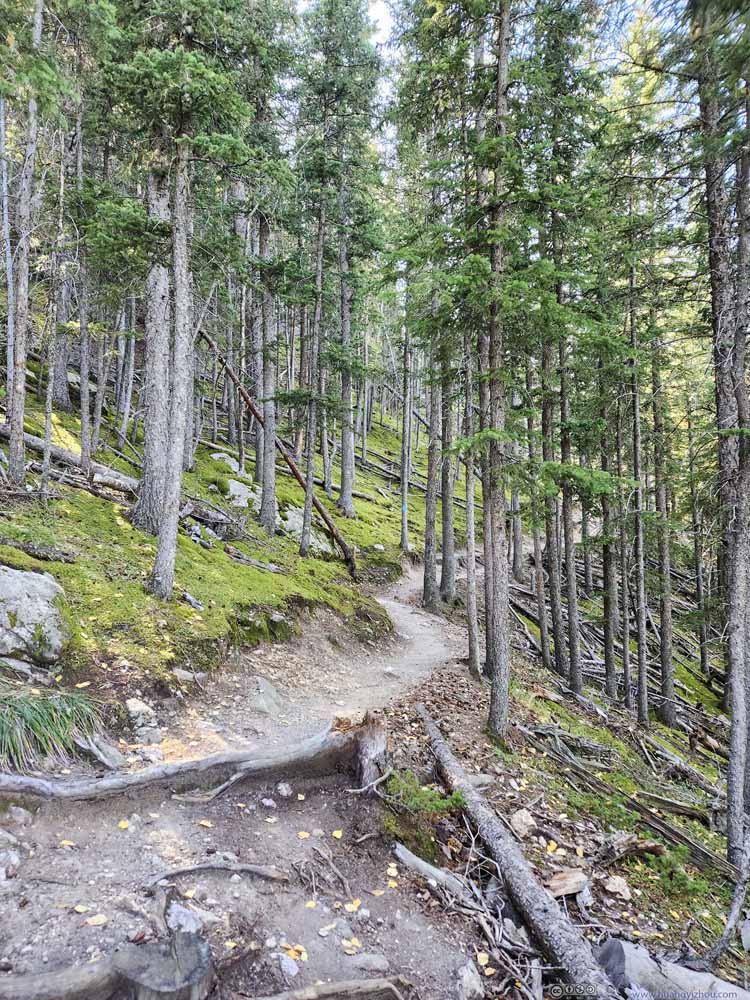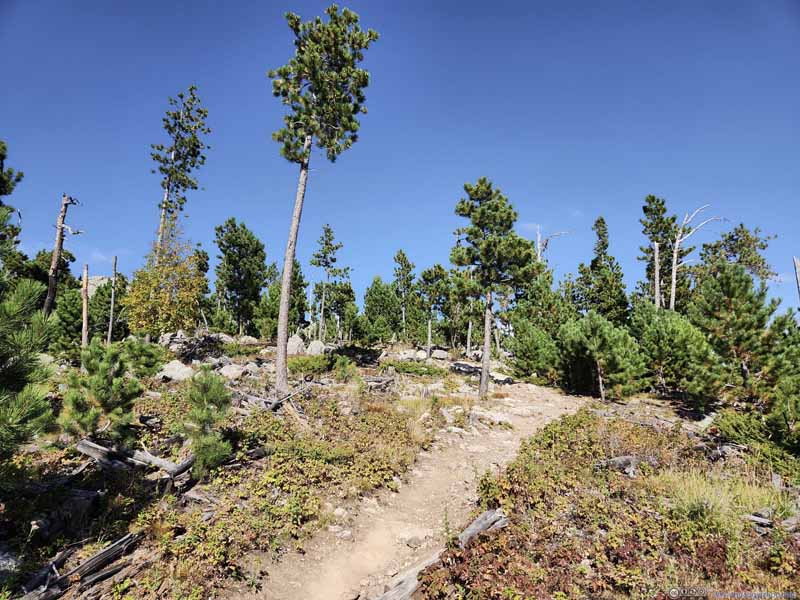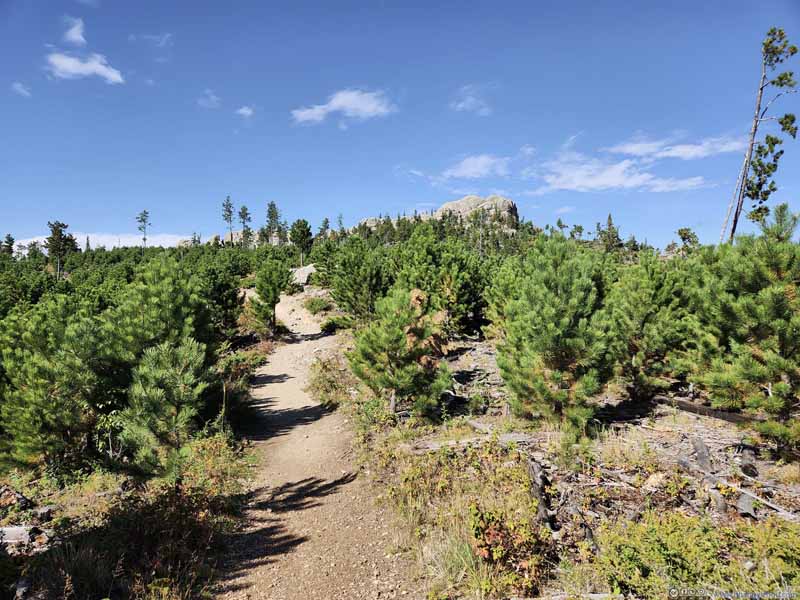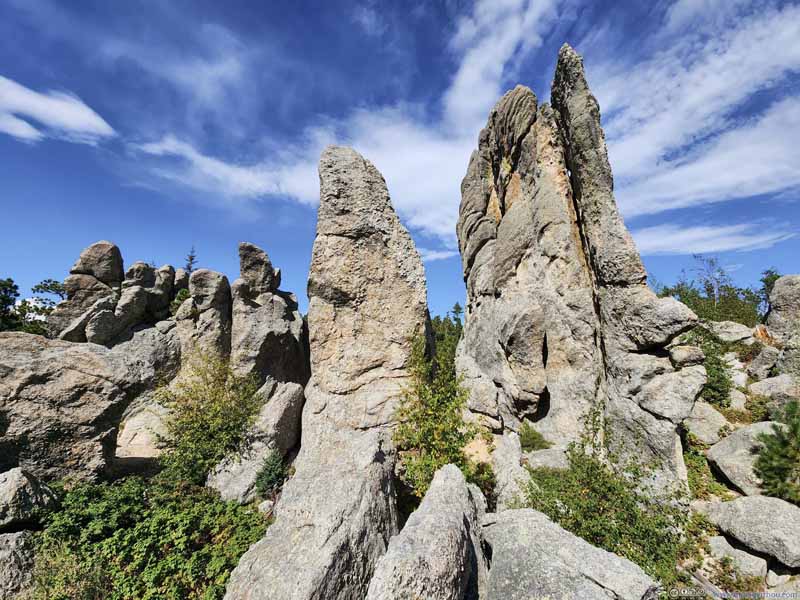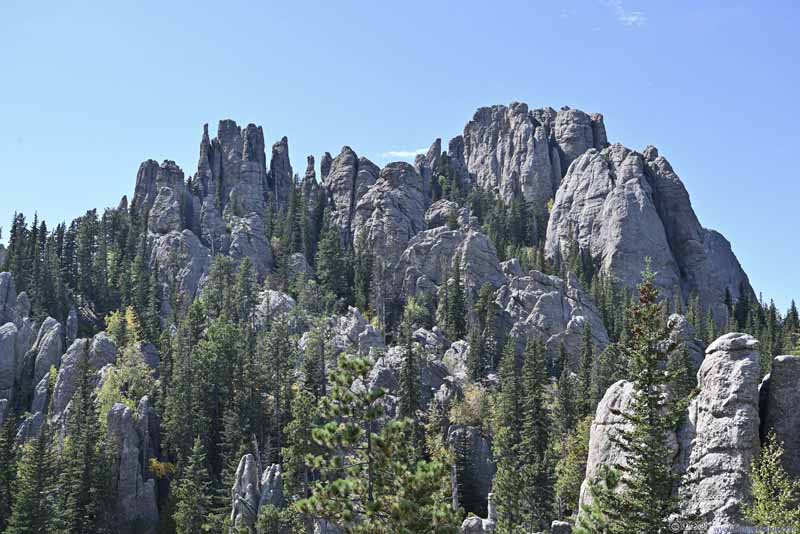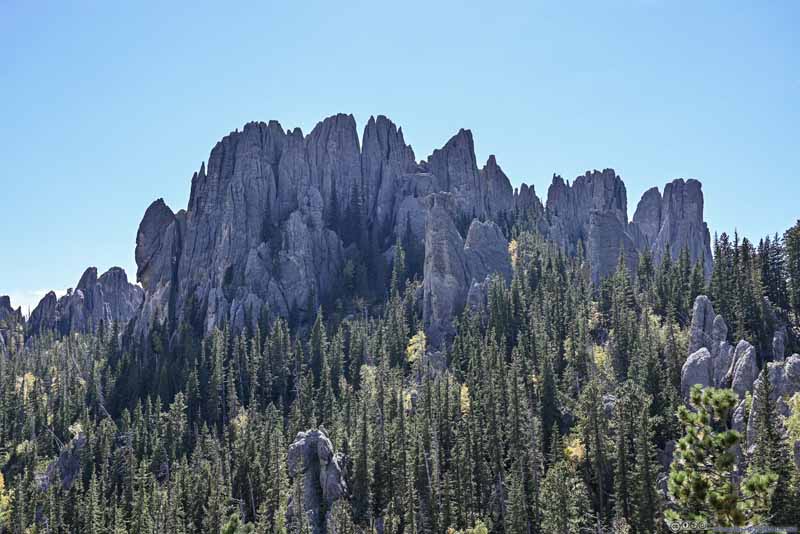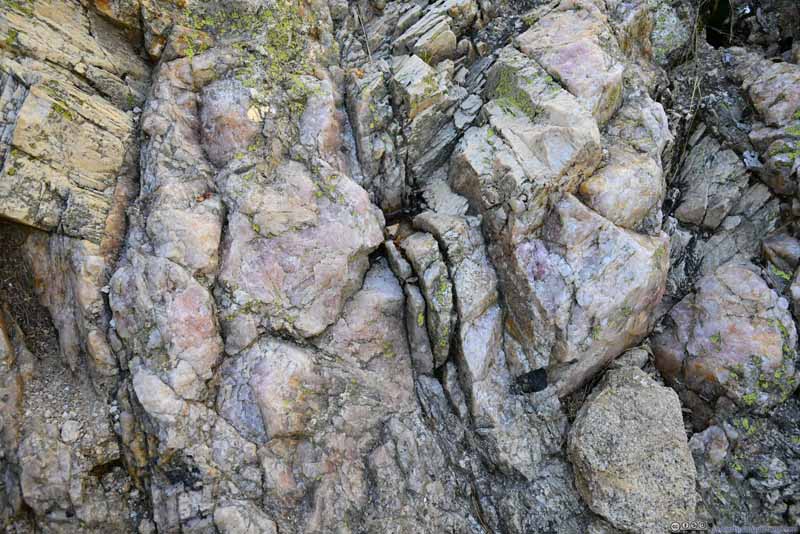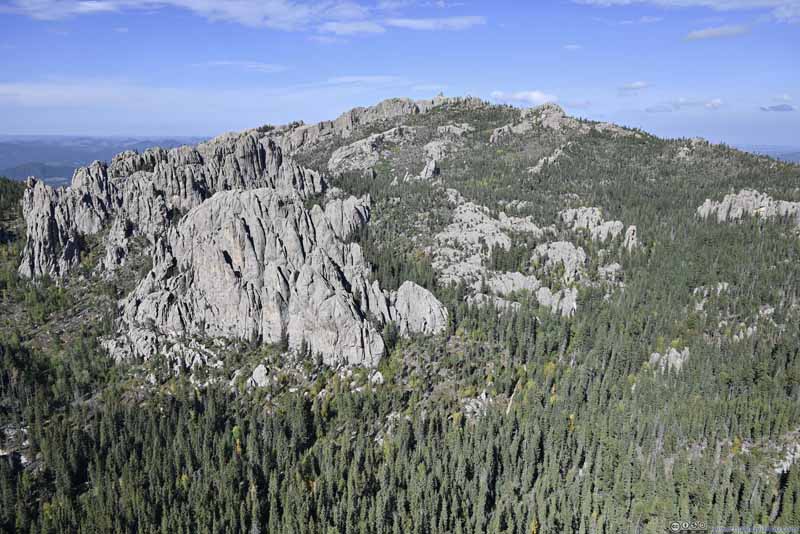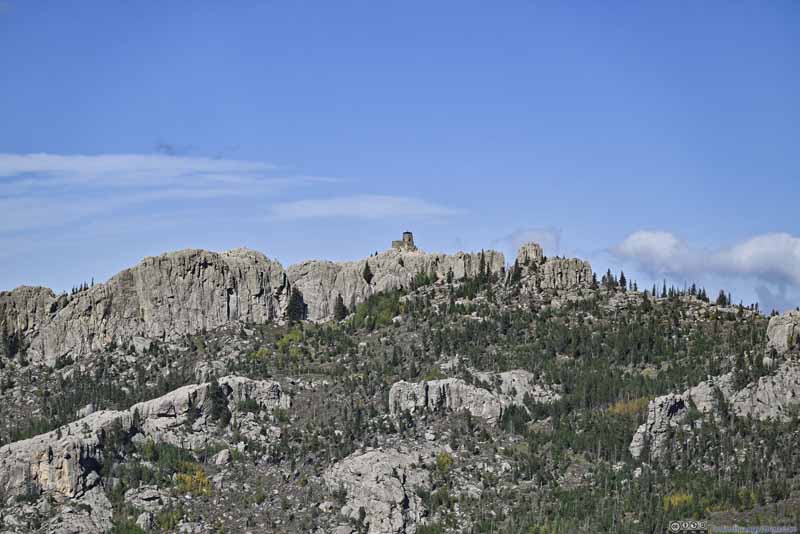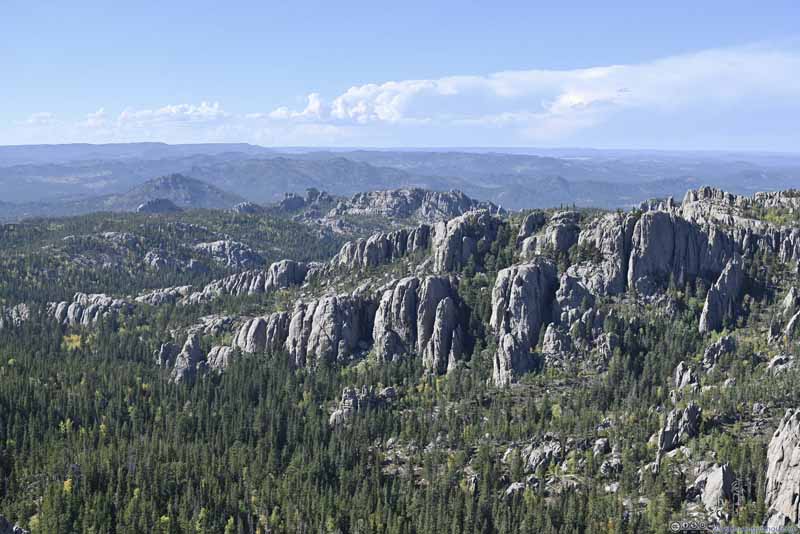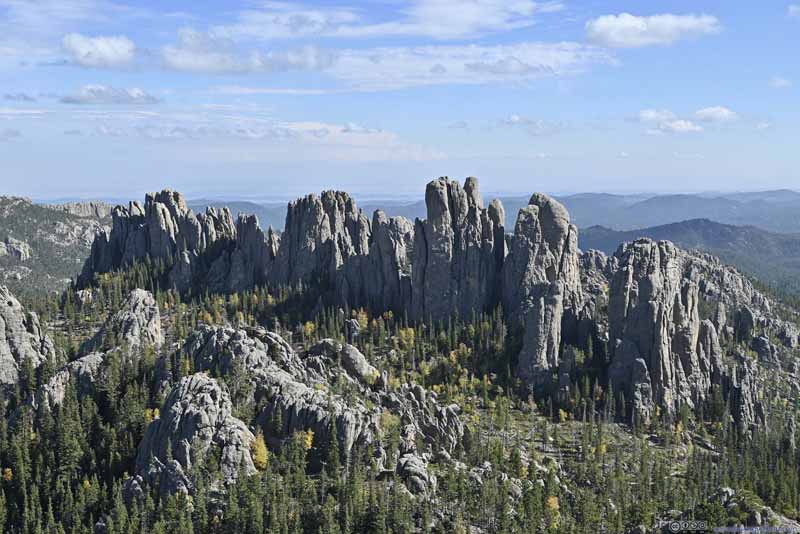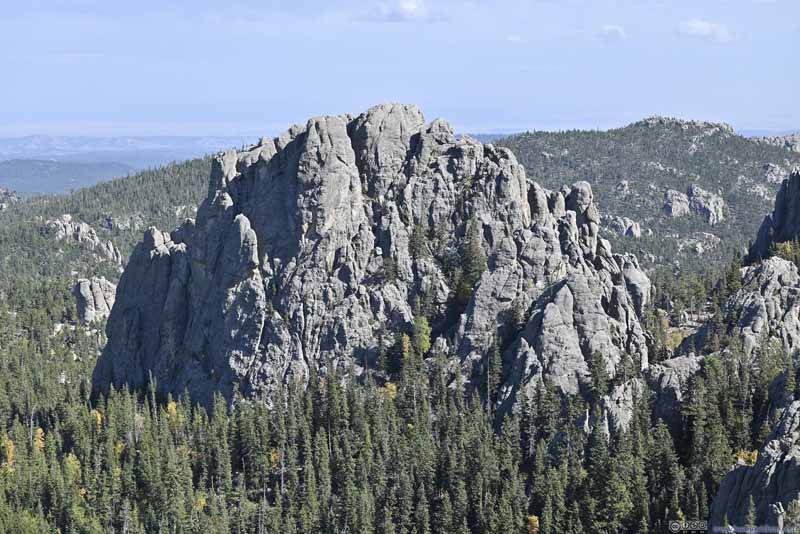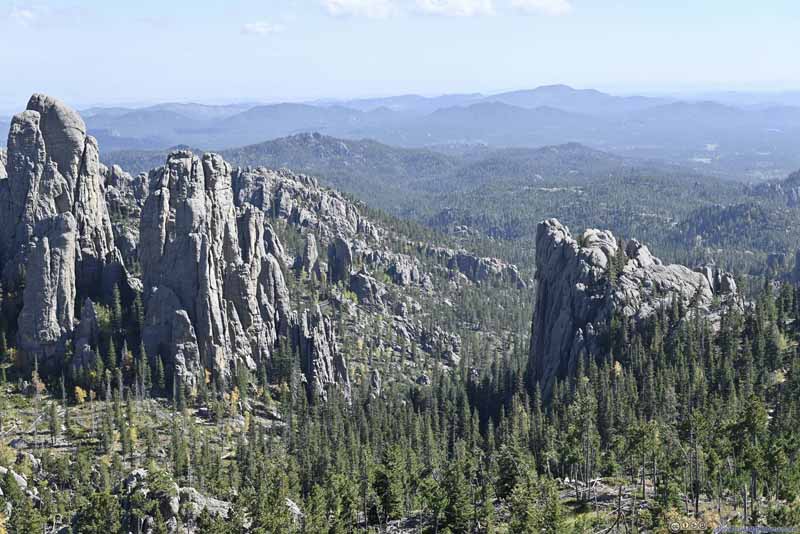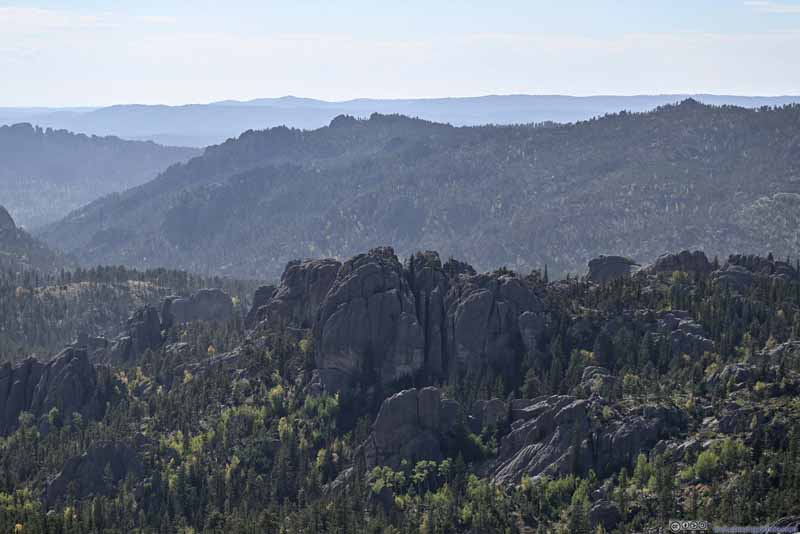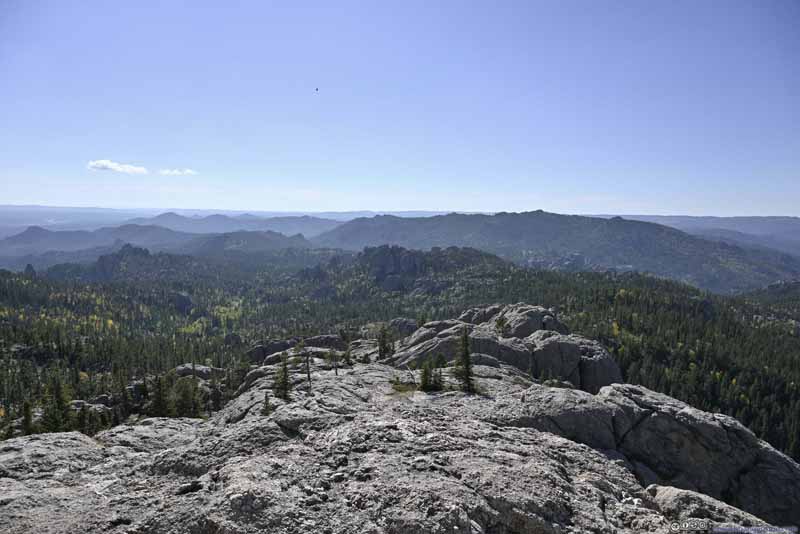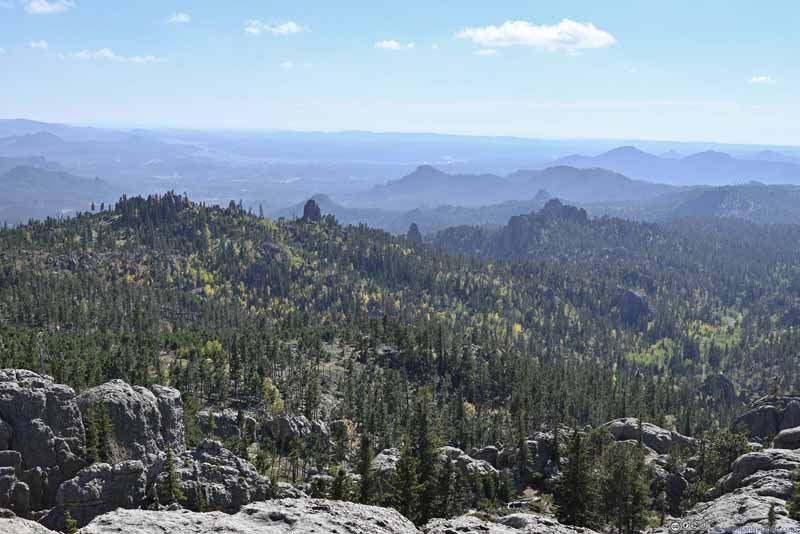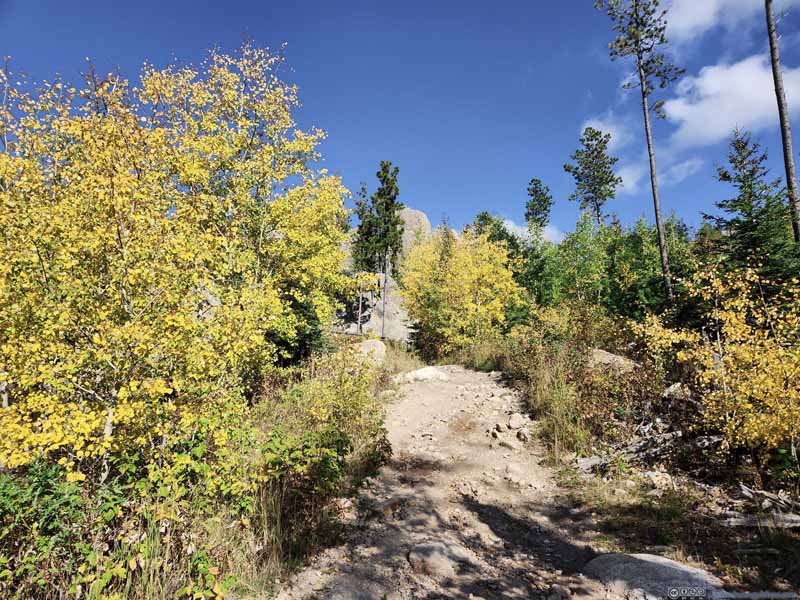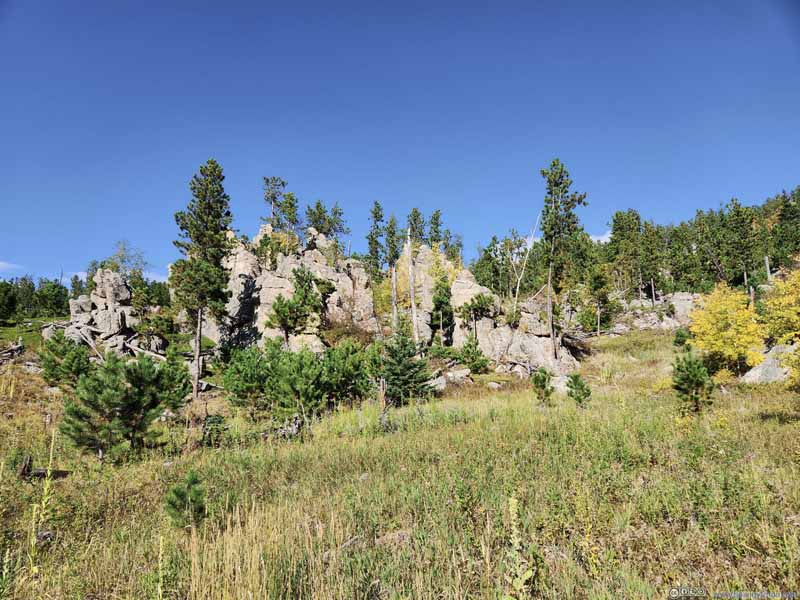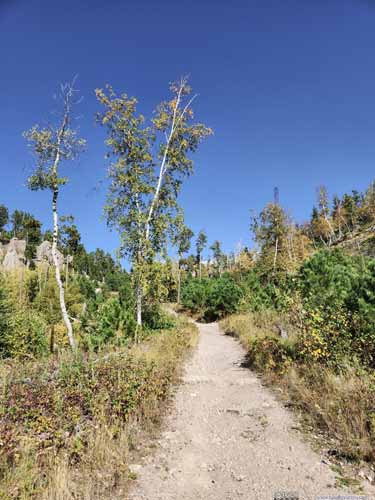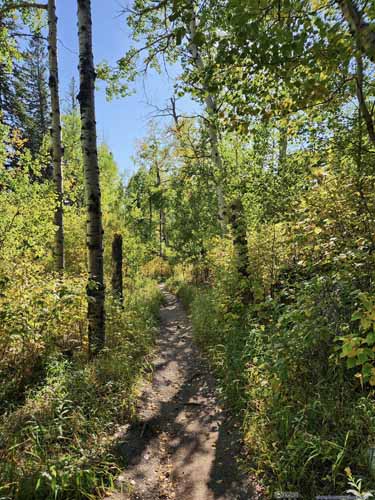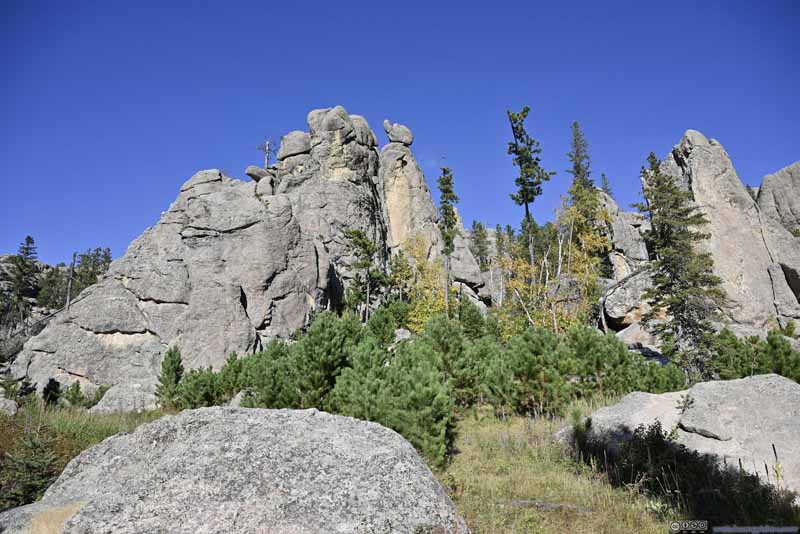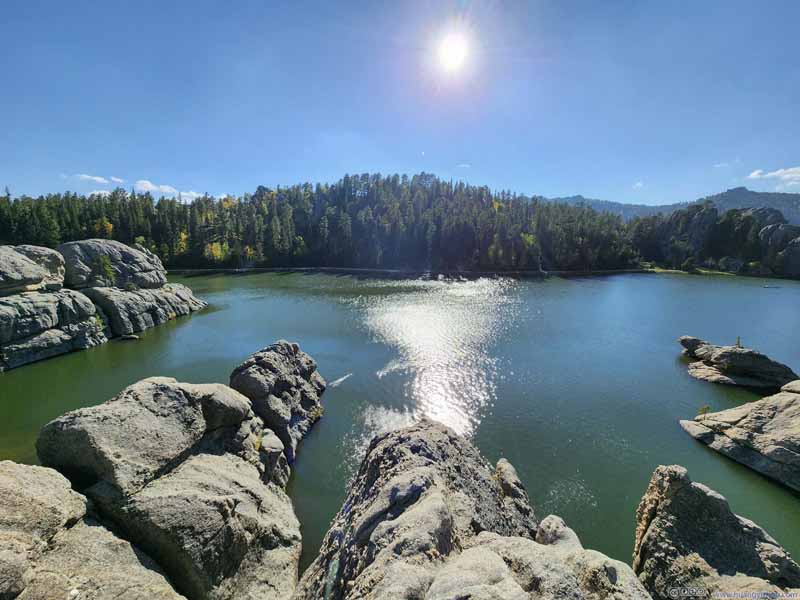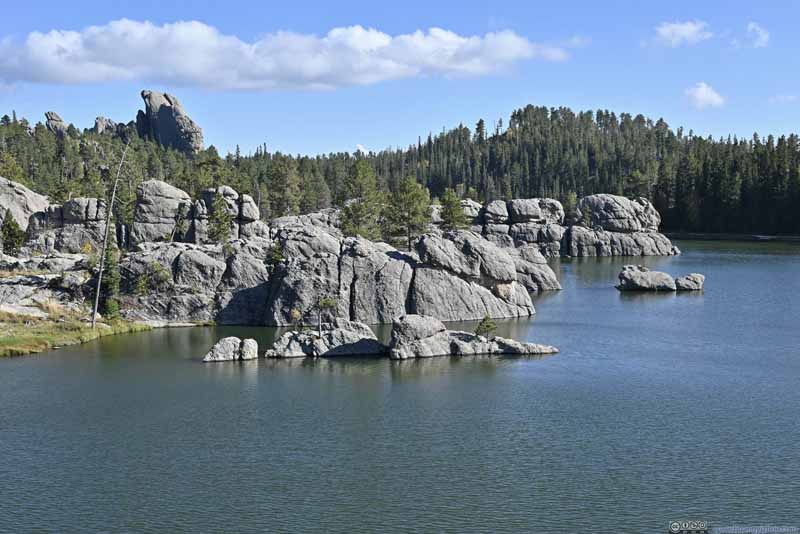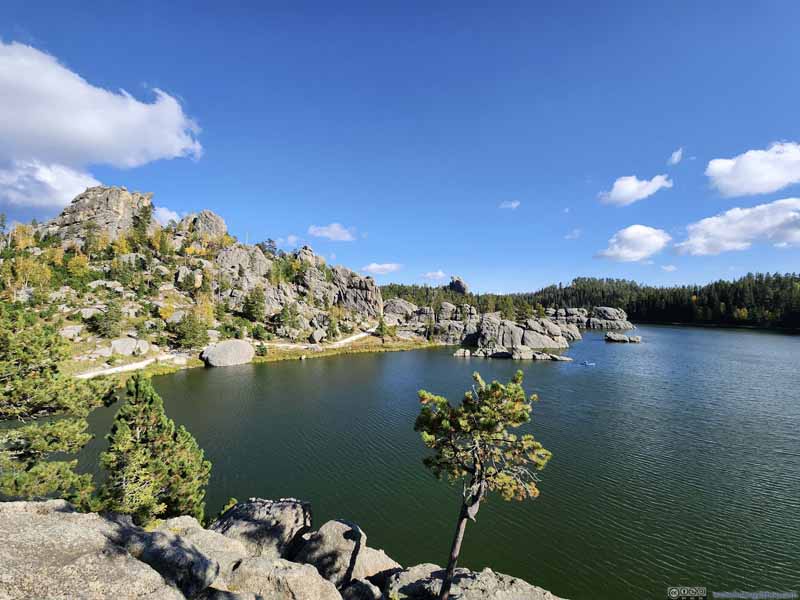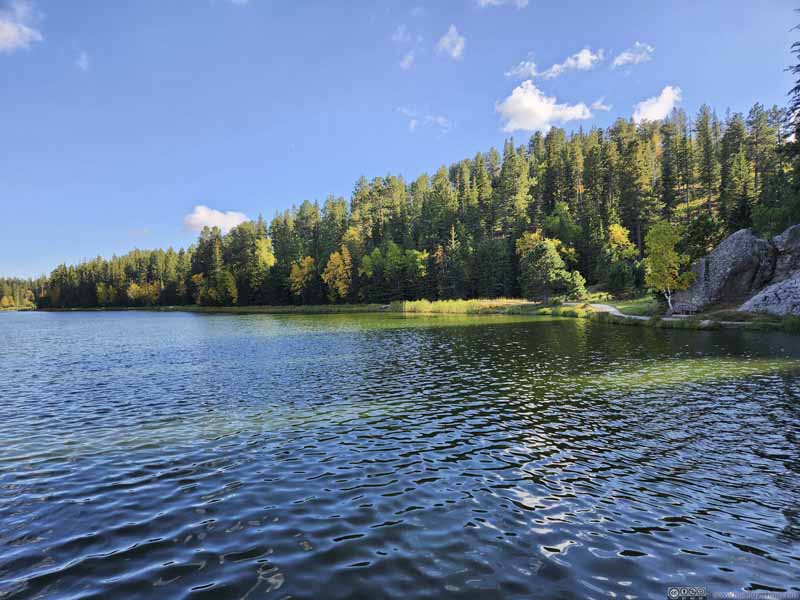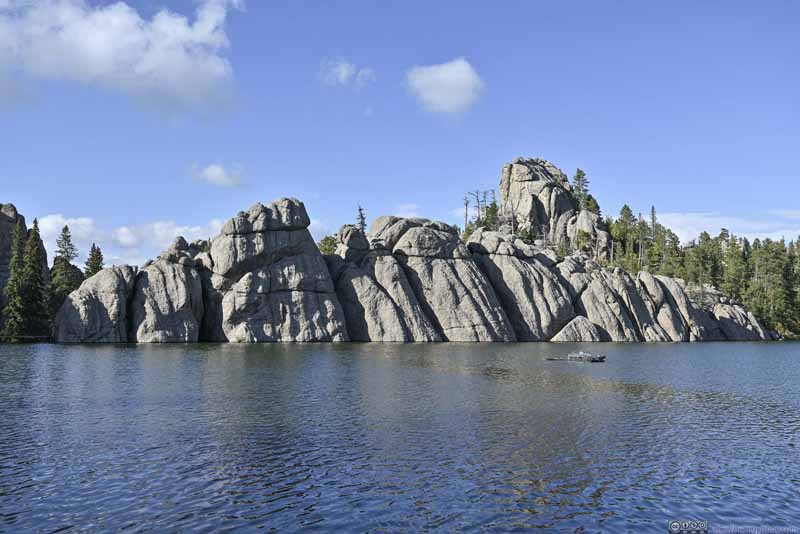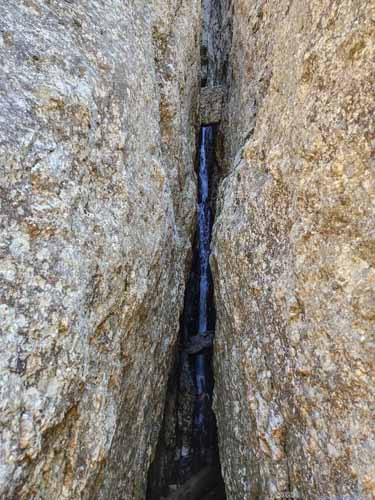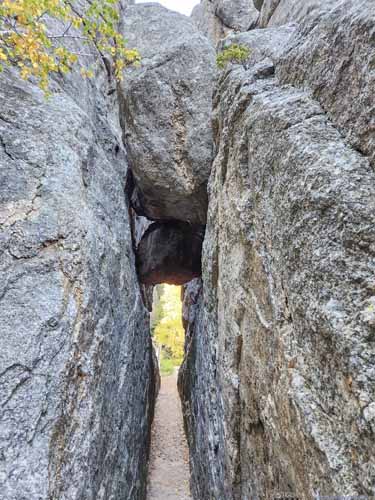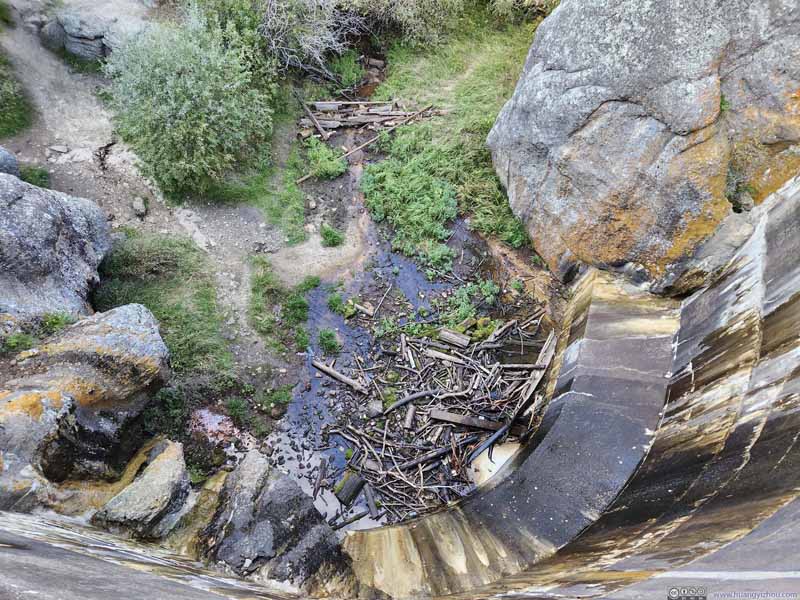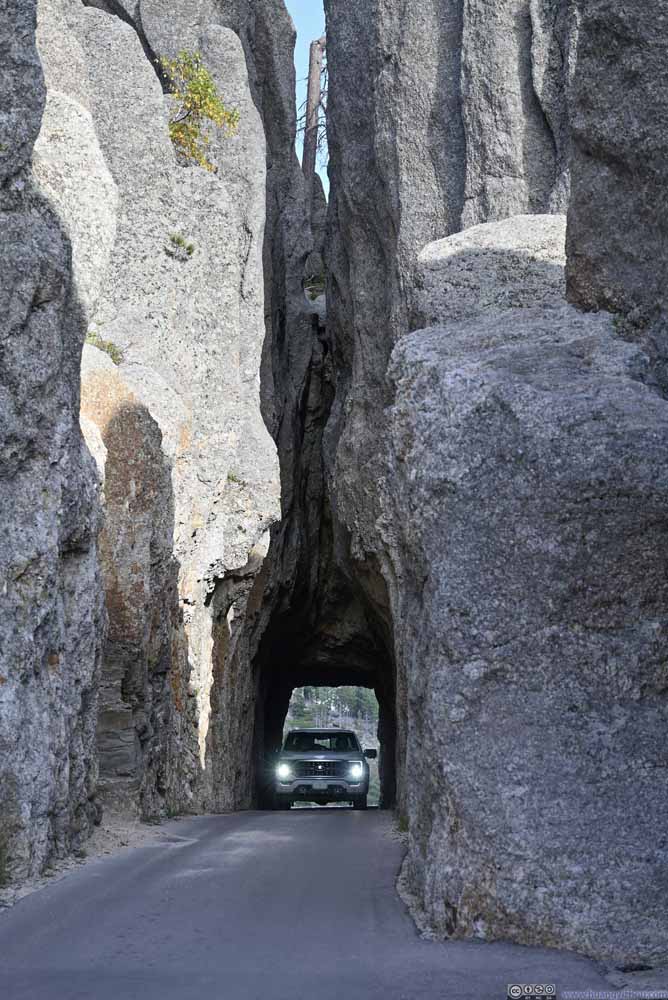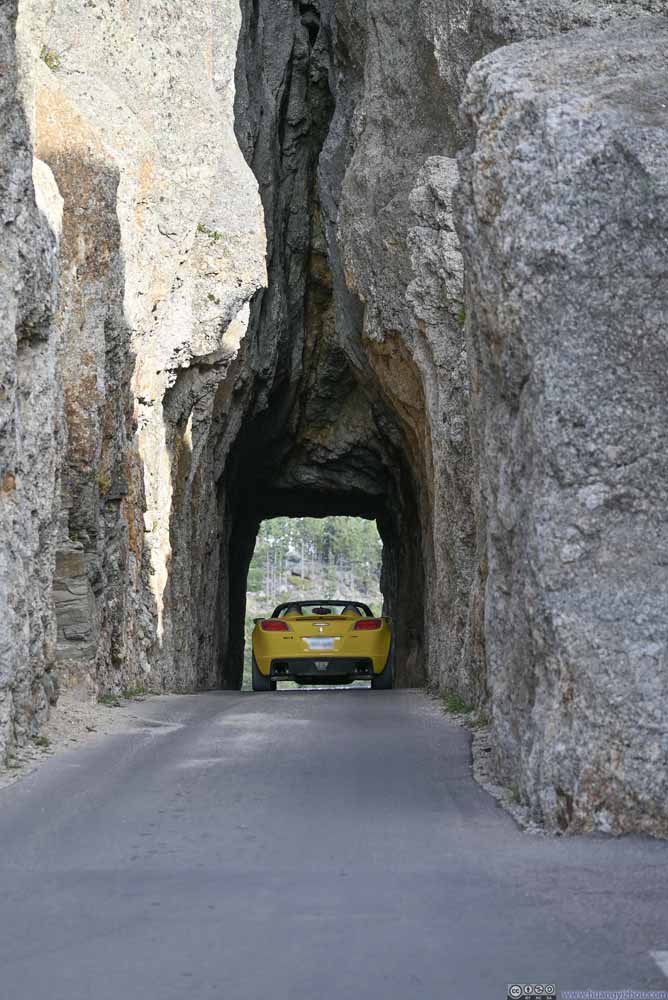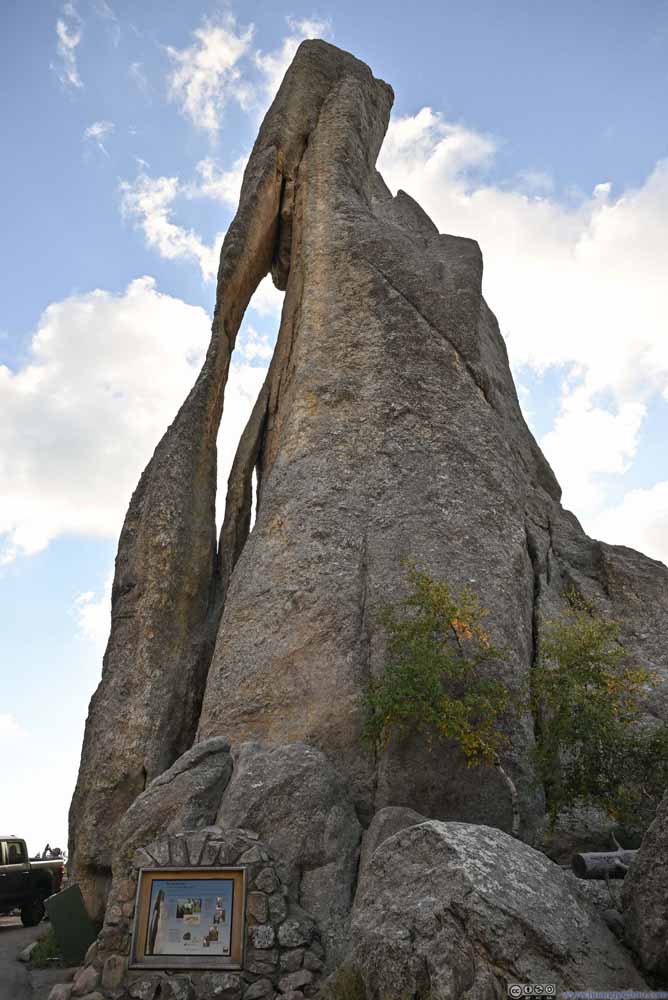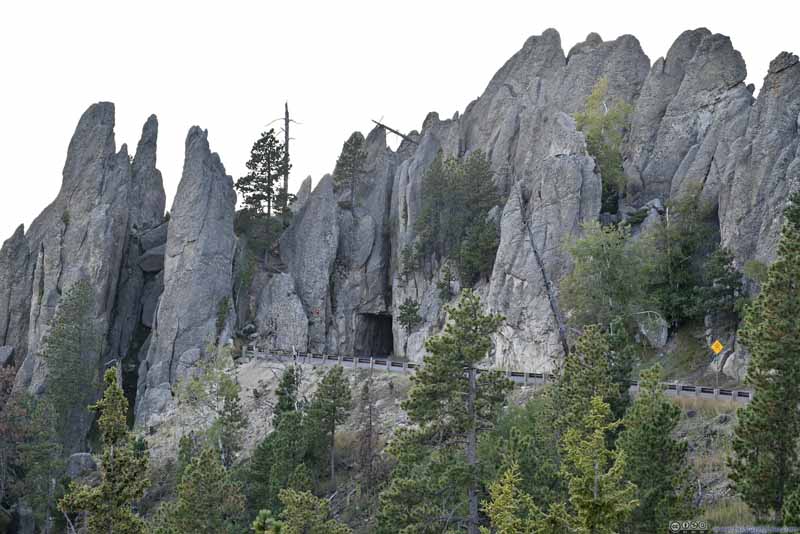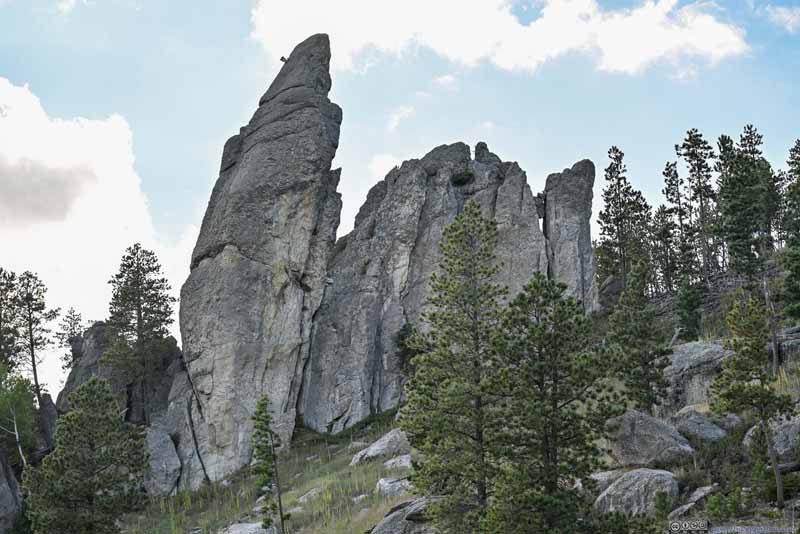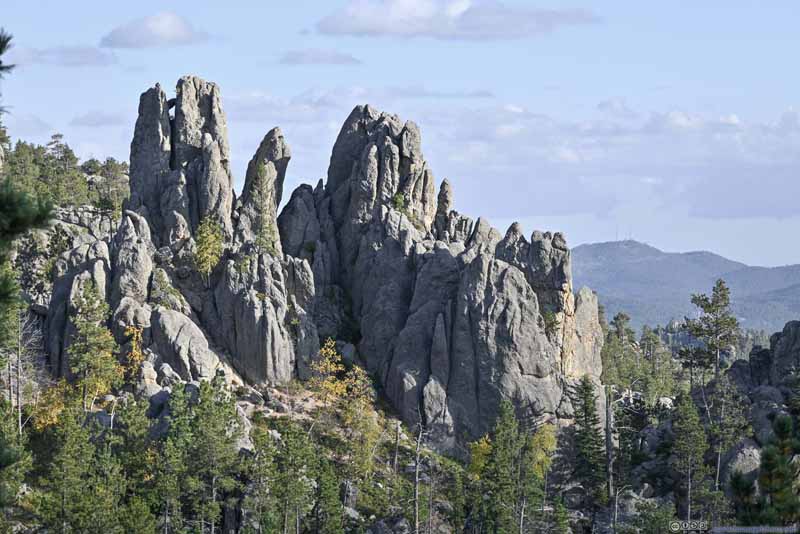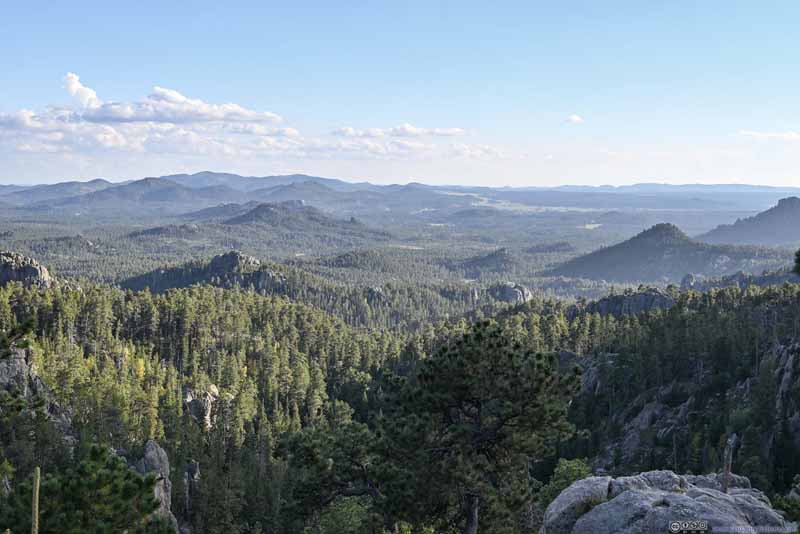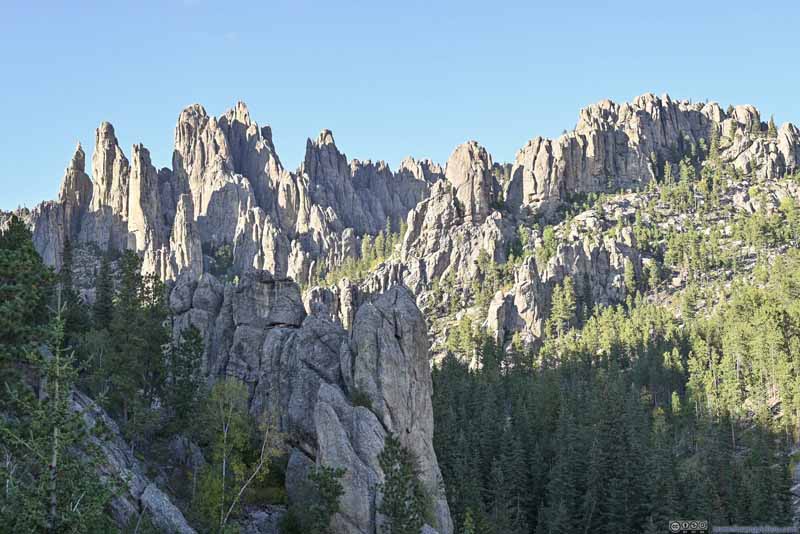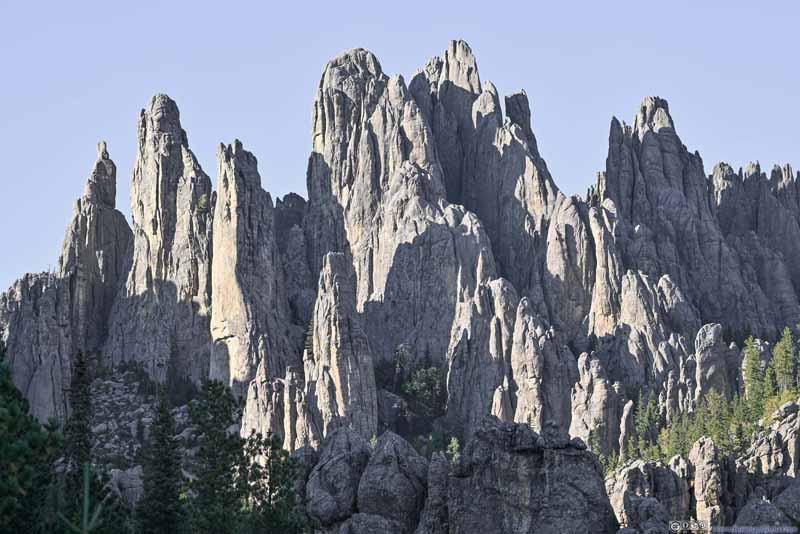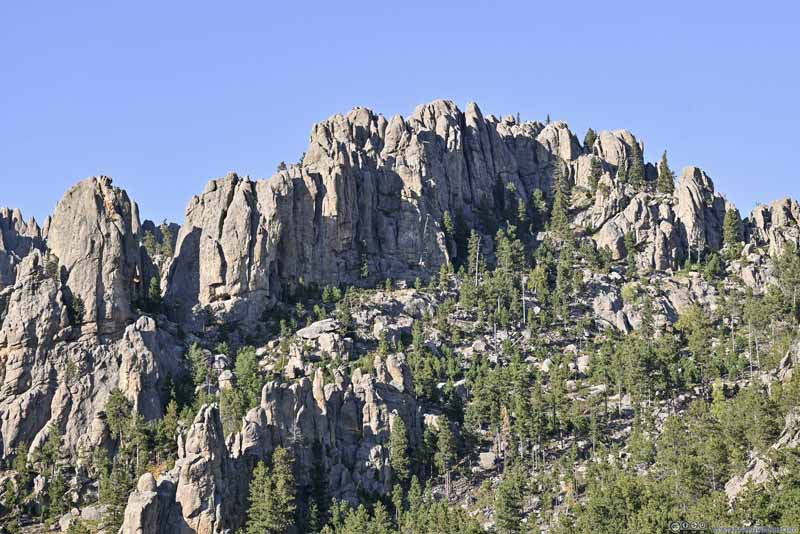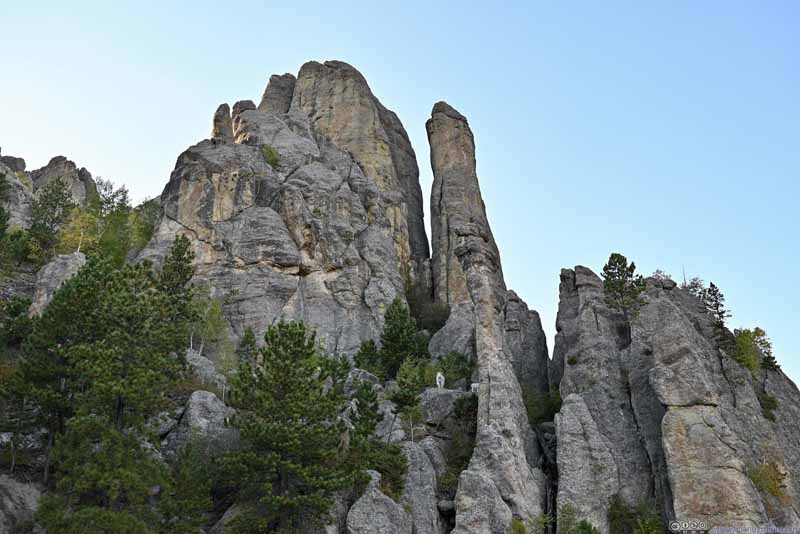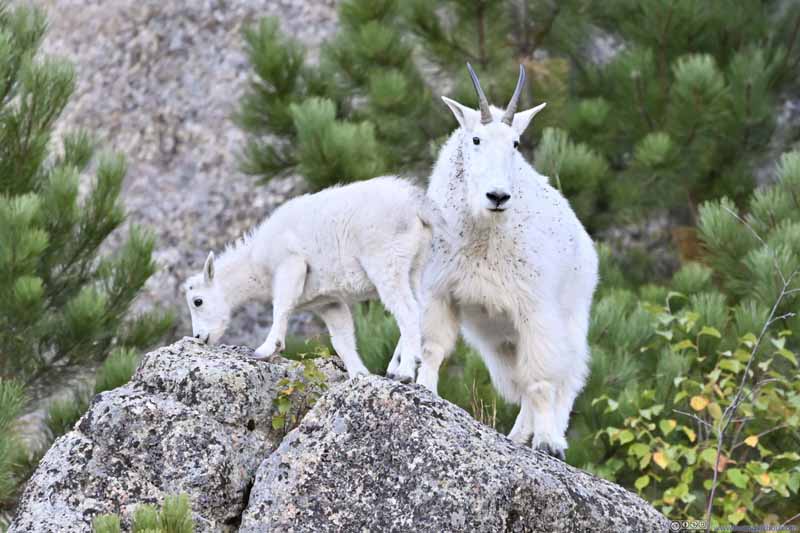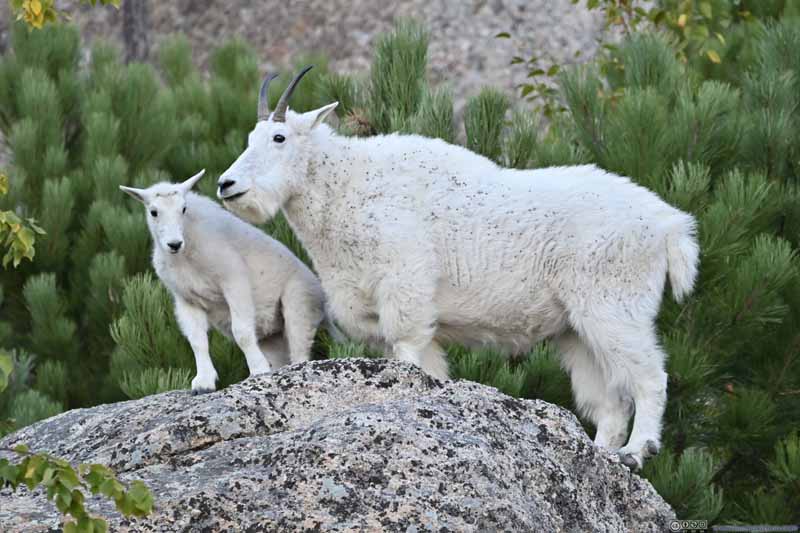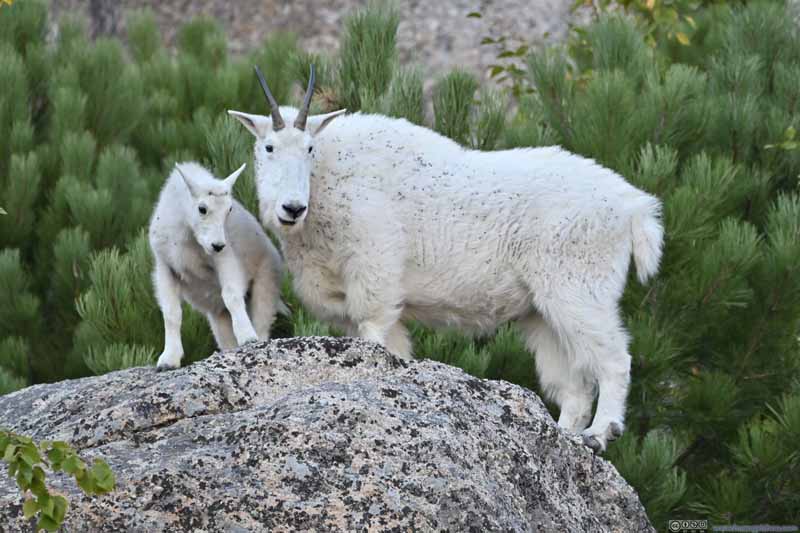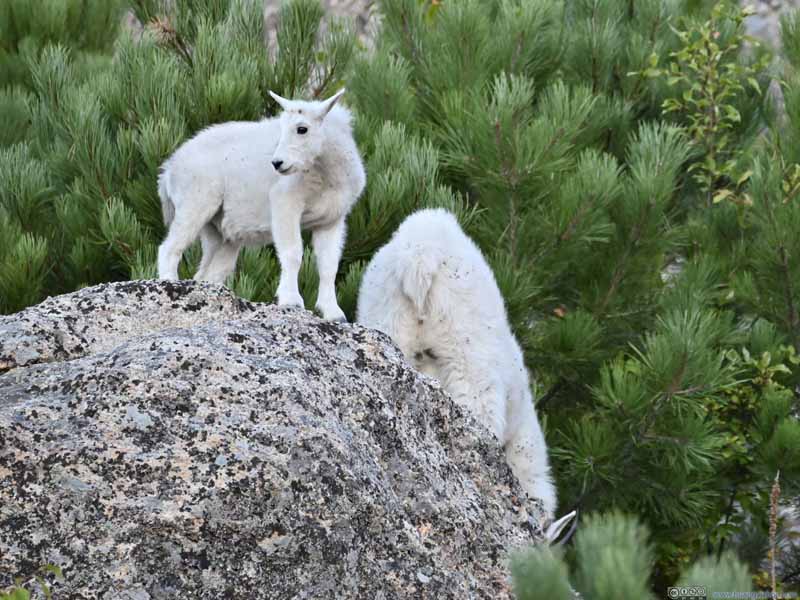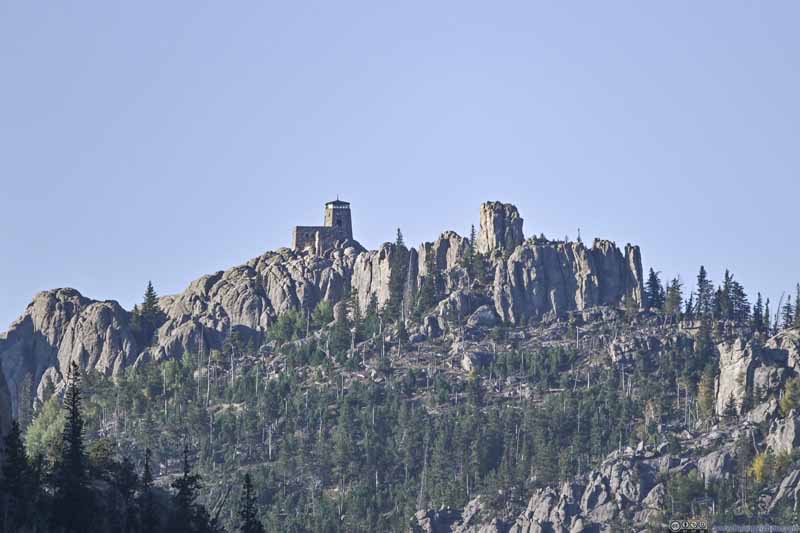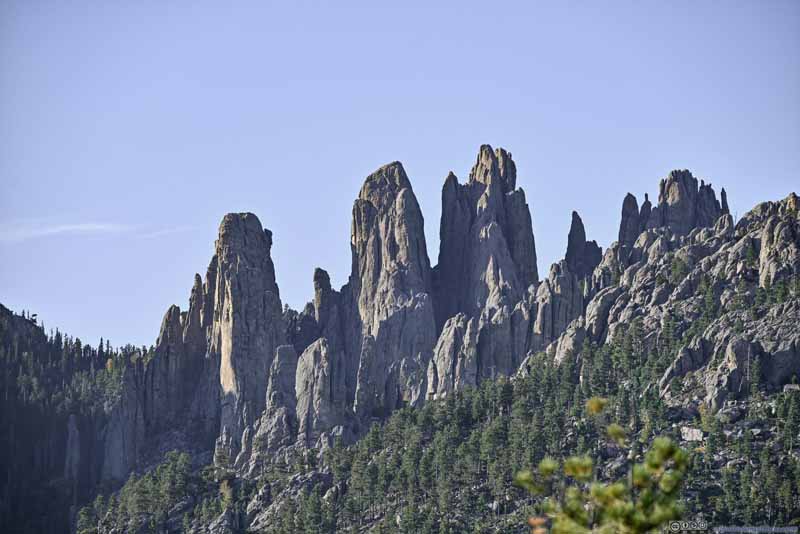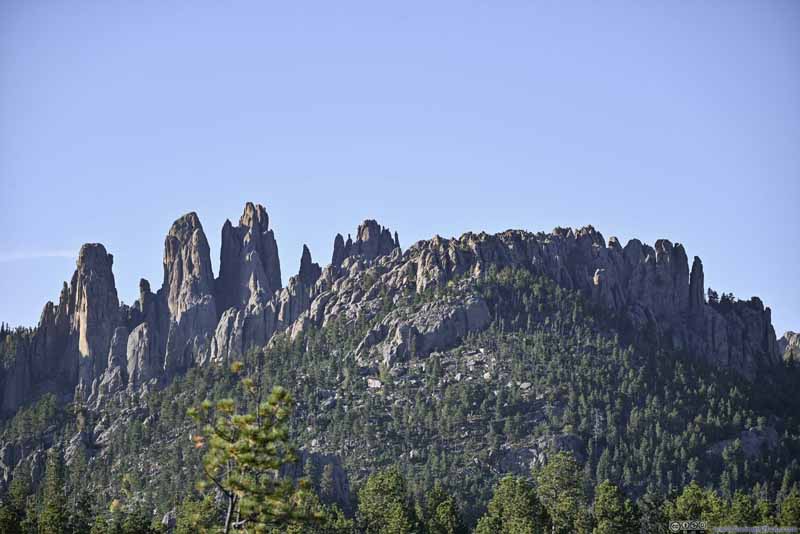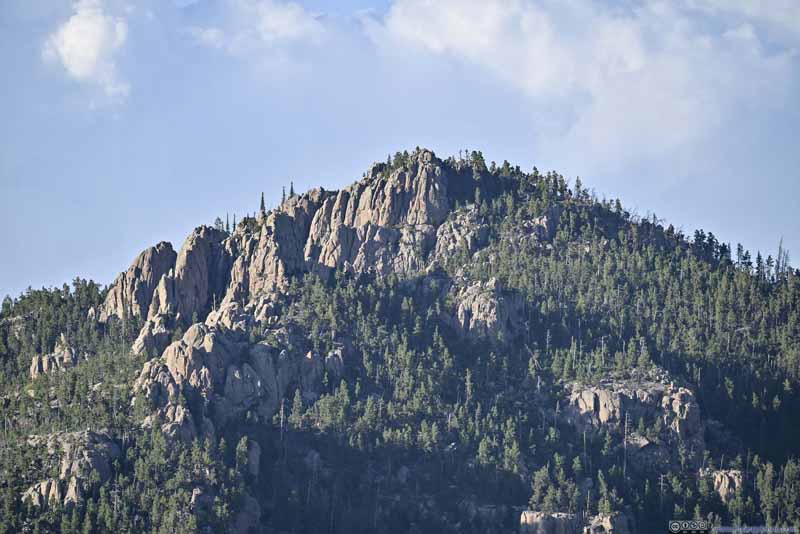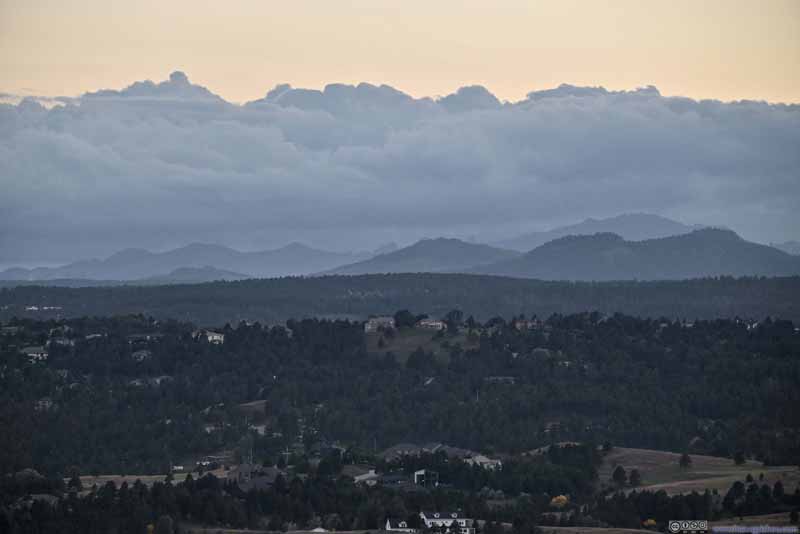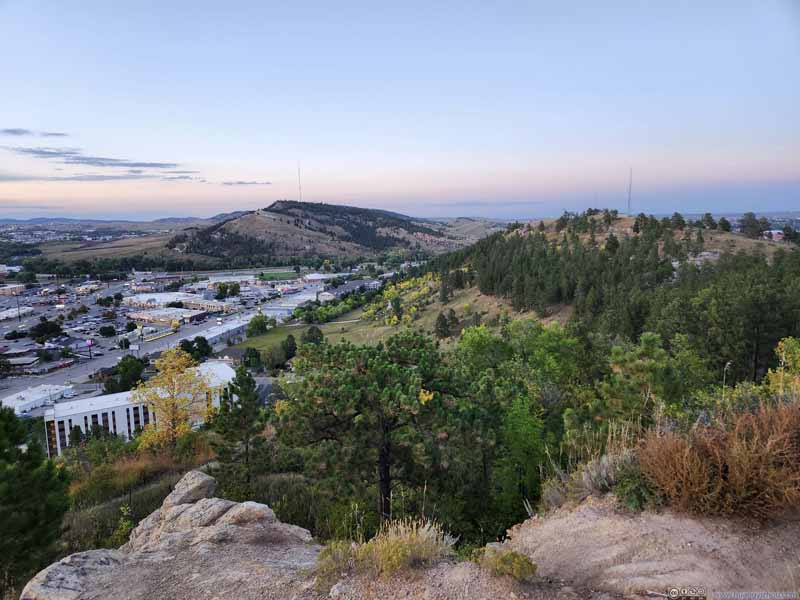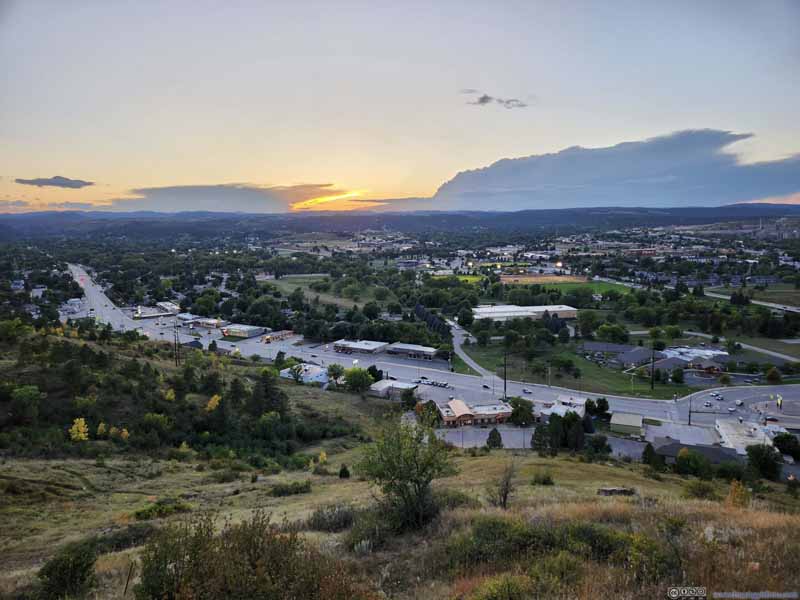Updated on April 20, 2024
Day 3 of Autumn 2023 Trip to Mountain States, Black Elk Peak, Highest Point of South Dakota
The third day of my autumn 2023 trip to the mountain states. I focused the day on Custer State Park, hiked to Black Elk Peak, South Dakota’s highest peak, in addition to checking out Needles Highway, a scenic mountain road in the park.
At an elevation of 2208m (7244ft), Black Elk Peak was the highest natural point of South Dakota, and (to spice things up) the highest between Rocky Mountains in western US and Pyrenees Mountains that border France and Spain. At the same time, its summit was relatively easy to access, through a 11.4km/7.1mi loop trail that presented no technical challenges. The trail went through the heart of the Black Hills area, featuring eroded granite shaped like pillars and spires, that was locally referred to as “needles”. For this reason, a trip to Black Elk Peak had always been on my radar.
I planned to spend 3 nights in the Airbnb in Rapid City, giving me two days to explore the Black Hills. Weather forecast indicated chances of rain the next day, so I decided to take the hike to Black Elk Peak today.
After leaving my Airbnb room at a leisurely 9am, I grabbed breakfast along the road, and made my way to Custer State Park. Along the way, I decided to take a detour to Pactola Lake, which was created by a reservoir and part of Rapid Creek, the namesake of Rapid City.
Click here to display photos of Pactola Lake.
Wind created some wrinkles on the lake, but otherwise it’s a peaceful scene to start the day.
Black Elk Peak Loop Trail
Since I didn’t know how long the hike to Black Elk Peak would take, I decided to reach its trailhead near Sylvan Lake from the west, so that I would drive down the scenic (eastern) part of Needles Highway after the hike. With that, I reached the trailhead past 10:30am. The trailhead had a sizable overflow parking lot. After some warmup, I started my hike at 10:50am.
The trails in the area were succinctly named in numbers. The loop trail(AllTrails link) that I took consisted of trail 9 (upper-left) and 3&4 (lower-right). Between the two, trail 9 had better views (of Black Elk Peak and its surroundings). Since I started sort of late in the day, I decided to take 9 first, so as to enjoy the views with the best lighting conditions.
And here’s GPS tracking:
The trail started out as a comfortable stroll through sparse forest (above), where the earliest signs of foliage were visible on some of the trees. 1.2km into the hike, the trail reached an intersection with “Lost Cabin Trail”, where for the first time Black Elk Peak popped into view.
While the view at the intersection was sort of obstructed, 360m later the trail passed a proper overlook with wide open views. A feast of all the granite with their impressive vertical textures and cracks.
Click here to display photos of the slideshow
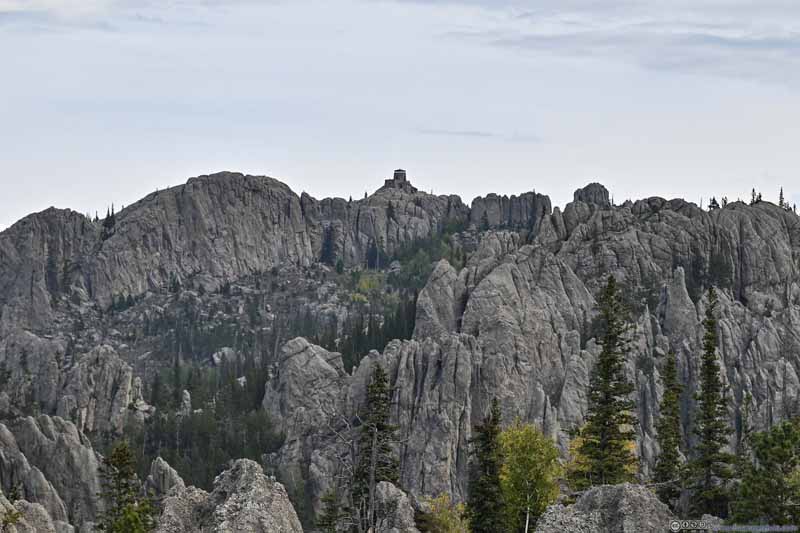
Black HillsFrom the proper overlooking along Trail 9. The summit observation tower of Black Elk Peak.
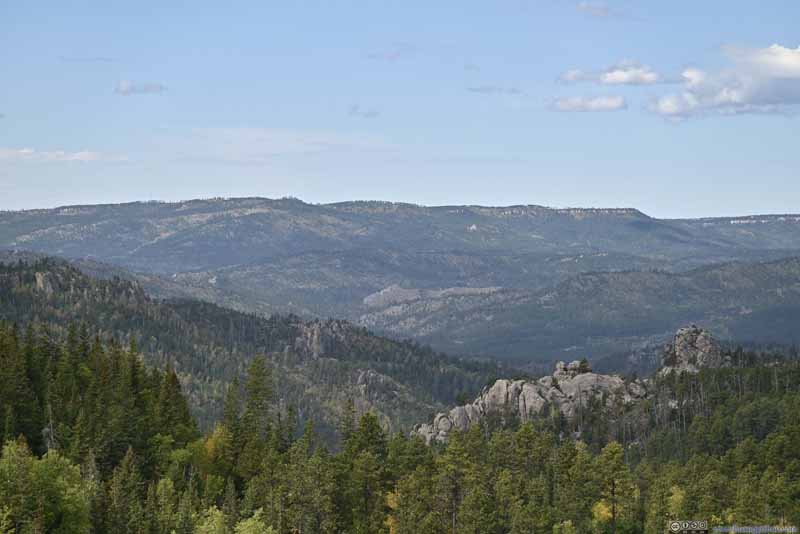
Distant Mountains
Continuing on, views of granite hills turned into forest in autumn colors as the trail entered Black Elk Wilderness.
Click here to display photos of the slideshow
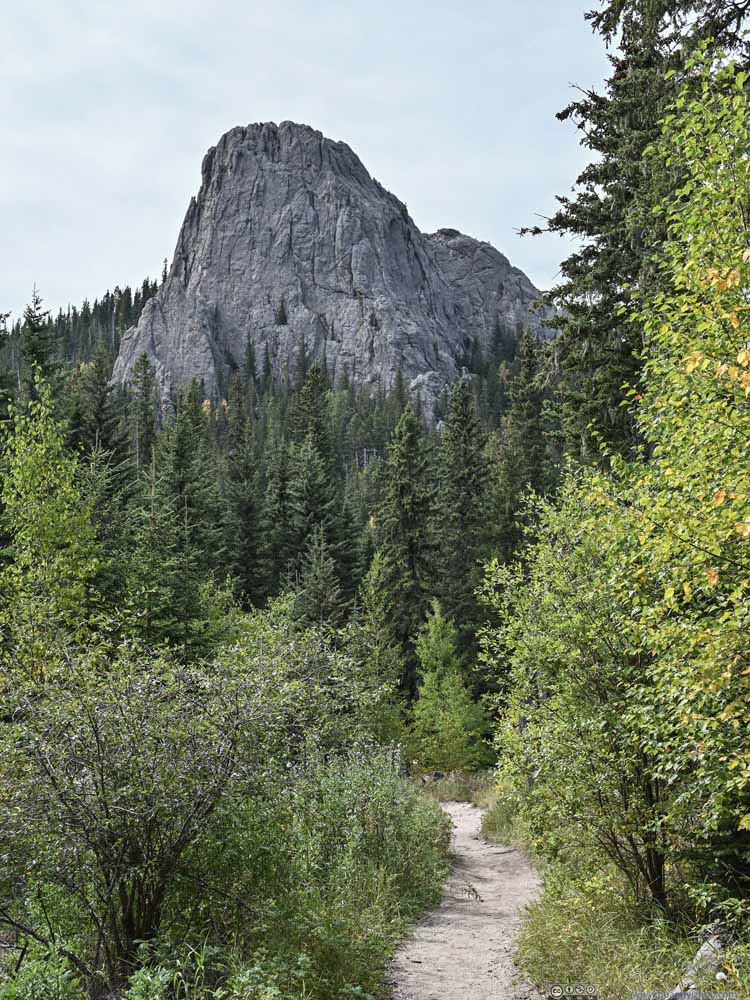
Little Devil’s Tower
At 12:15pm, I reached the intersection with Trail 3. After that, it’s a 800m spur to the summit of Black Elk Peak.
A not-so-pleasant feature was that, after the intersection, portions of the trail had animal droppings scattered around.
Click here to display photos of the slideshow.
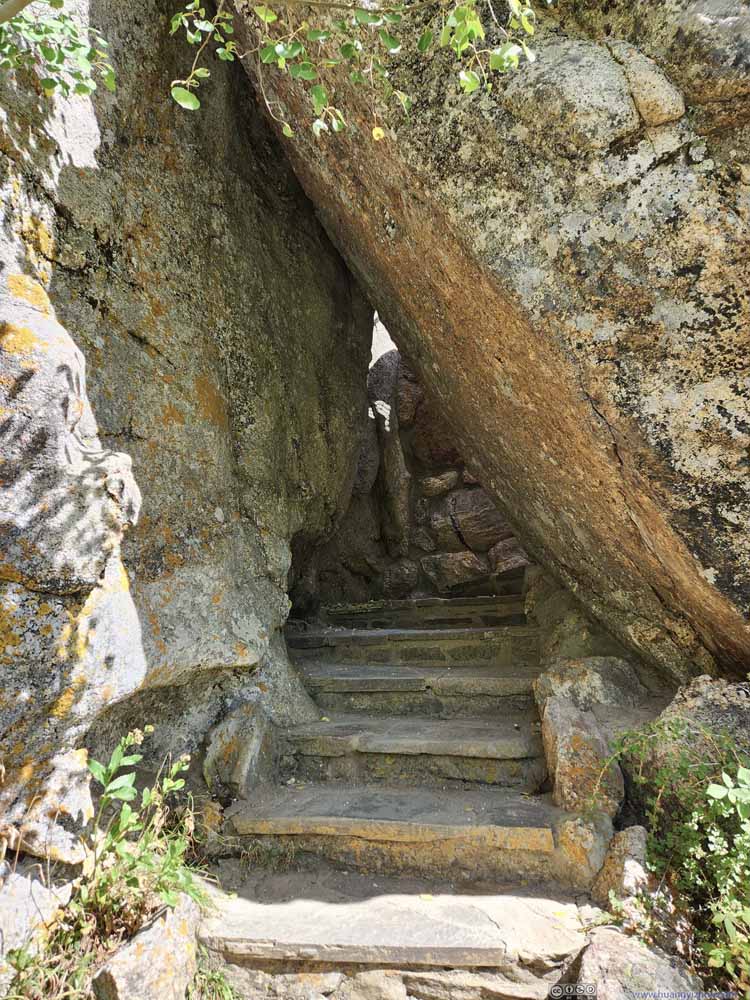
Trail under Rocks

Spiral StairsAfter the rock tunnel there was this set of spiral stairs, helping hikers overcome a steep cliff.

Top Floor of Fire Tower
Black Elk Peak Summit
Finally, I reached the summit of Black Elk Peak at 12:35pm.
On top of the summit was a fire tower that was constructed in 1938 and in use until 1967. Much of the tower was still in good shape and open to hikers as a vista or emergency shelter. The tower was visible from much of the Black Hills region, and thus helped me easily identify Black Elk Peak during the rest of my trip.
Click here to display photos of the fire tower atop Black Elk Peak.

Pond
To the north and west of the fire tower, the granite fields were relatively flat, allowing people to spread out and appreciate the views.
Click here to display photos from the summit of Black Elk Peak.
Click here to display photos from the summit of Black Elk Peak.

Mount Rushmore
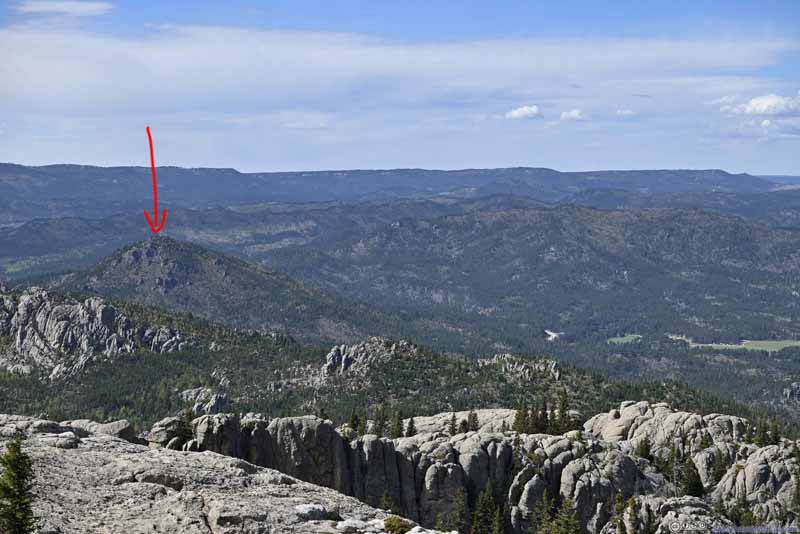
Mountains to the Northwest

View from Black Elk Peak towards the SouthwestPortions of this photo, near the left one-fourth point, were generated from content-aware fill.
Wind was relatively strong on top of Black Elk Peak (and later today on Little Devil’s Tower). But with an abundance of boulders around, it wasn’t hard to find a spot on the downwind side as shelter.
In the end, I spent about 45 minutes at the summit of Black Elk Peak, before starting my descent around 1:20pm. Past the intersection, I continued onto Trail 3 to finish the loop. The initial part of Trail 3 had little scenic value, to make things worse, I was bothered by some non-biting bugs at the higher elevations, so it was the least enjoyable part of the hike. (It was cloudy in the morning but largely sunny in the afternoon, which could partly explain why the bugs were more active.)
Not long after the intersection of Trail 3/4, I found some boulders (p1 below) a short detour from the trail. After finding a path through the boulders (that required minimal bushwacking), I reached a vista of Cathedral Spires (p2-3 below). Had it been in the morning, the rocks of Cathedral Spires would be in the light, which would make them look more picturesque.
After that, on both OpenStreetMap and AllTrails Map, there was a turnoff from Trail 4 serving as a shortcut to “Cathedral Spires Trail”. (OpenStreetMap marked it as “Old Harney Peak Trail”.) This would come in handy if I decide to check out “Needles Other Eye”. I scouted around the area, set a few steps into the bushes, but I couldn’t identify that trail. Even if it existed, I concluded the trail would be overgrown and hard to travel on. As a result, I remained on the main trail.
Click here to display photos of the slideshow
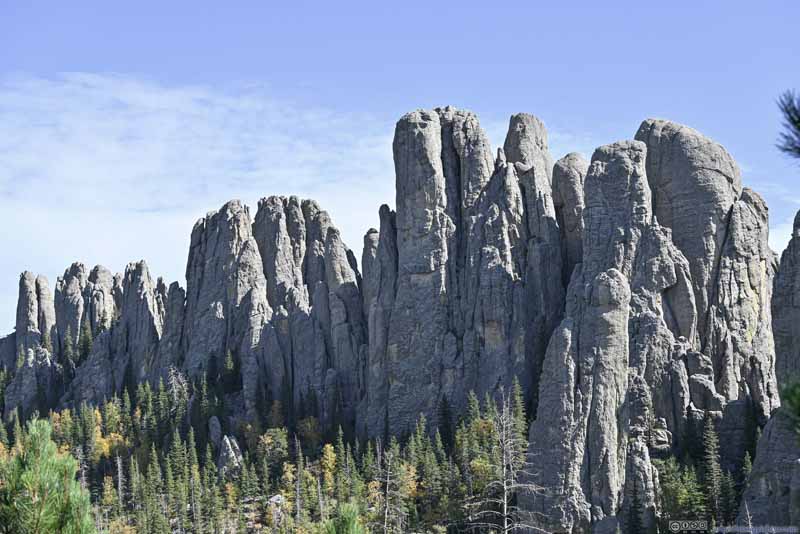
Cathedral SpiresLater along the trail, closer to Little Devils Tower, viewed from a different angle.
Figuring there was still enough daylight left, I decided to check out Little Devil’s Tower, adding 1.2km to my hike. (Here came another advantage of the clockwise hike as I reached the spur to Little Devil’s Tower after summitting Black Elk Peak, so I could decide on whether to take on Little Devil’s Tower based on how I felt.)
Little Devil’s Tower
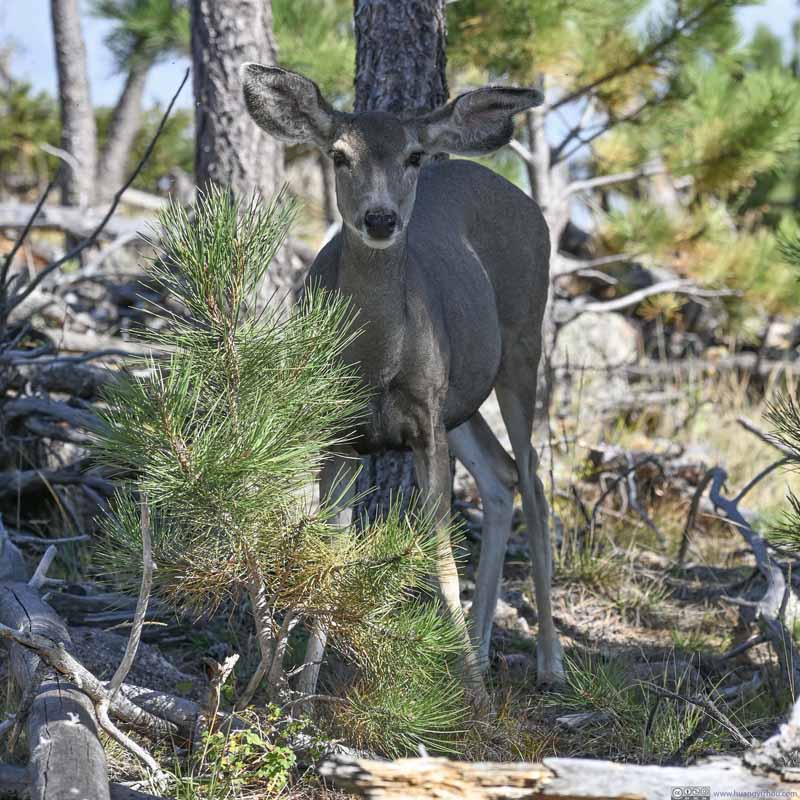
Deer near Trail
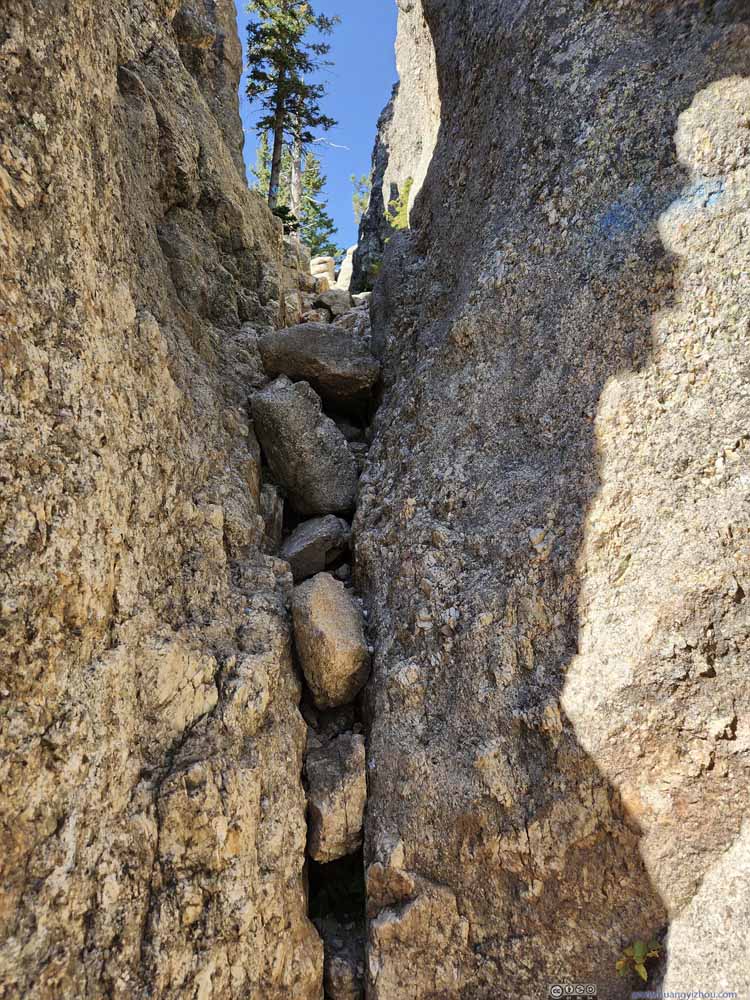
Trail to Little Devil’s Tower
Named after its bigger brother in Montana (which I would visit in 2 days), Little Devil’s Tower only resembled a rock tower when looked from the north, and hence the word “little” in its name. But while Devil’s Tower in Montana required proper climbing gear / technique to summit, Little Devil’s Tower took just a simple hike (with minimal scrambling) to reach its top. Nonetheless, the scramble was the most technical part of the loop hike (which showed how easy it was to reach Black Elk Peak), so it wasn’t nearly as popular as Black Elk Peak. During my visit, I only shared Little Devil’s Tower with one other group.
As for the views, Little Devil’s Tower sure had some to rival the ones from Black Elk Peak. From its summit, Black Elk Peak towered above various granite rocks to the north, and Cathedral Spires were the prominent presence to the south. In my opinion this detour was totally worthwhile.
Click here to display photos from Little Devil’s Tower.
After about 25 minutes at Little Devil’s Tower, I started to head back. Foliage colors were abundant, but apart from that the remainder of the trail offered few views.
Click here to display photos of the slideshow

Boulders
In the end, I got back to the trailhead at 4:05pm, finishing the hike in just over 5 hours.
With enough daylight left, I decided to check out Sylvan Lake, located next to the trailhead. The loop trail around the lake was just over 1 mile long, a perfect option for those that were not into more strenuous hikes.
Sylvan Lake
Click here to display photos of Sylvan Lake.
Portions of the lake’s shore, particularly the northern and northwestern part, were made of boulders that extended into the lake (like peninsulas). I found it a pleasure to rest on these boulders while enjoying the glittering wrinkles of the lake (together with my snacks).
Some striking boulders (p1-2 below) defined the western boundary of the lake, beyond which it fed into Sunday Gulch Creek. In my opinion this was supposed to be controlled by a dam (p4 and p6 below), but interestingly, a small crack in the boulders (p3 below) allowed some water to escape.
Click here to display photos of the boulders surrounding Sylvan Lake.
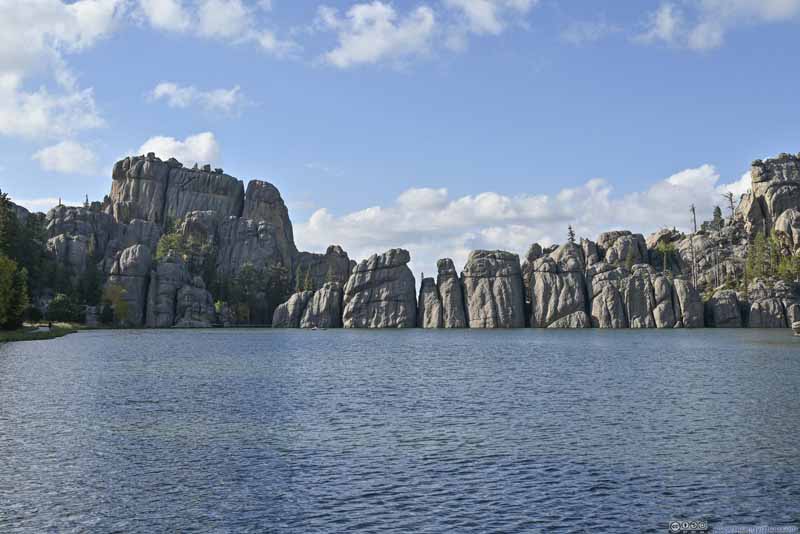
Boulders along Sylvan Lake
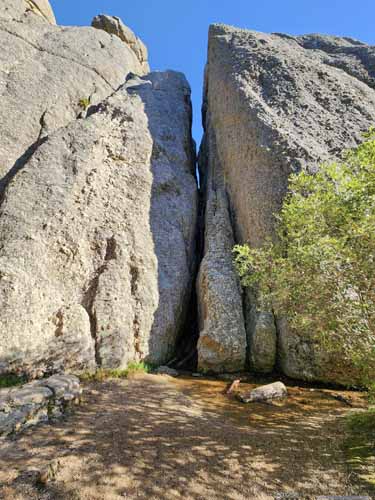
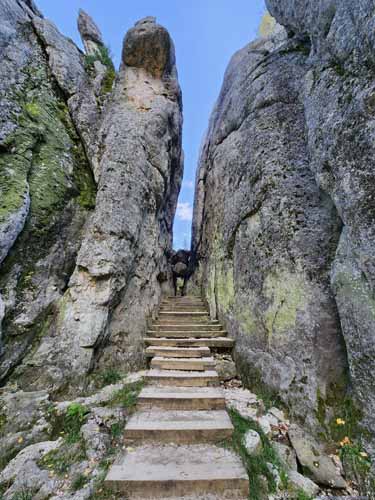
Needles Highway
Just before 5pm, I left Sylvan Lake and started driving east along Needles Highway. Below is a timelapse video from my windshield-mounted GoPro, recording my entire drive through Needles Highway for the day, starting from Pactola Lake in the morning.
12 minutes and 49 seconds, 2160p30fps, H265 only, 14Mbps/1.4GB.
- 0:00 Leaving Pactola Lake Visitor Center.
- 2:33 Hill City
- 3:23 Entering Needles Highway from the west (US385).
- 4:58 Hood Tunnel
- 5:42 Ticket booth of Custer State Park, near Sylvan Lake.
- The video continues after my hike to Black Elk Peak, as I continued east along Needles Highway.
- 6:13 Needles Eye Tunnel. The only part of the video that’s not sped up.
- 7:34 Cathedral Spires Trailhead
- 8:23 Needles Scenic View. The last scenic overlook along Needles Highway (if heading east).
- 9:36 Iron Creek Tunnel
- 11:14 Leaving Needles Highway and onto South Playhouse Road (as I headed back towards Rapid City). A deer along the road causing some traffic jam.
- 11:27 Spotted another deer crossing the road.
- The video ends shortly after I headed onto North Playhouse Road from US 16A.
While I drove the portions of Needles Highway from US16 to Sylvan Lake in the morning, the highlight of Needles Highway was immediately to its east, at a place called “Needles Eye”.
Here an elongated opening appeared in one of the “needles”, resembling the shape of a sewing needle and hence the name. If looked from the right angle (p3 below), one could find an additional smaller “eye” next to the big “eye”.
Next to the “Needles Eye” was “Needles Eye Tunnel”. This was the longest of three tunnels along Needles Highway; it also had the highest “needles” surrounding it. Given the popularity of “Needles Eye” it’s prone to traffic jams. Towards its west was a small parking lot where “Needles Eye” was just a few steps away.
Click here to display photos of the Needles Eye and Surrounding Tunnel.
After crossing through Needles Eye Tunnel, there was an overlook to view its entrance from the east. Interestingly, I identified a few small openings in the surrounding boulders (p2-3 below).
Click here to display photos of the slideshow
Next, I made a stop at “Cathedral Spires Trailhead”. If one was only interested in Cathedral Spires (not the full loop that I took today) then this was the most convenient trailhead. But it had very limited parking.
Click here to display photos from Cathedral Spires Trailhead.
A few mountain goats were standing on top of one of the boulders, drawing a sizable crowd. This was the first time that I saw wild goats in years, so I naturally switched on my telephoto lens and joined the crowd. The following photos were cropped to 850mm equivalent.
Leaving Cathedral Spire Trailhead, my final stop along Needles Highway was “Needles Scenic View”. In my opinion, this was the last (first if coming from the east) overlook with scenic views along Needles Highway. The views were sort of far as the following photos were still taken with my telephoto lens. From this angle, the Cathedral Spires looked like distinct rock slabs, instead of a continuous group of towering boulders as seen earlier today.
Click here to display photos from “Needles Scenic View”.
After that, I made my way back to Rapid City. It’s about sunset time as I approached its outskirts. To the southwest of downtown Rapid City, a road (Skyline Drive) followed a mountain ridge. So I turned onto that road and found an overlook (Stonewall Overlook Trailhead), with views of various rolling hills to the west. Unfortunately, clouds were thick this afternoon so I didn’t see the actual sun setting behind the mountains.
Click here to display photos of the slideshow

Distant Black Elk PeakAlmost 32km/20mi away, but I could still tell the distinctive shape of its fire tower.

View from Stonewall Overlook
After that, I grabbed dinner along the way and concluded the day.
END
![]() Day 3 of Autumn 2023 Trip to Mountain States, Black Elk Peak, Highest Point of South Dakota by Huang's Site is licensed under a Creative Commons Attribution-NonCommercial-ShareAlike 4.0 International License.
Day 3 of Autumn 2023 Trip to Mountain States, Black Elk Peak, Highest Point of South Dakota by Huang's Site is licensed under a Creative Commons Attribution-NonCommercial-ShareAlike 4.0 International License.

